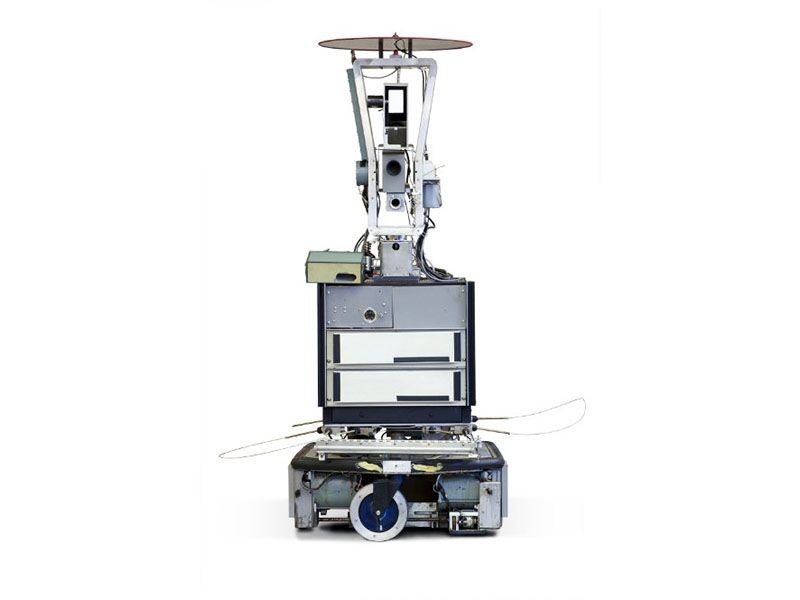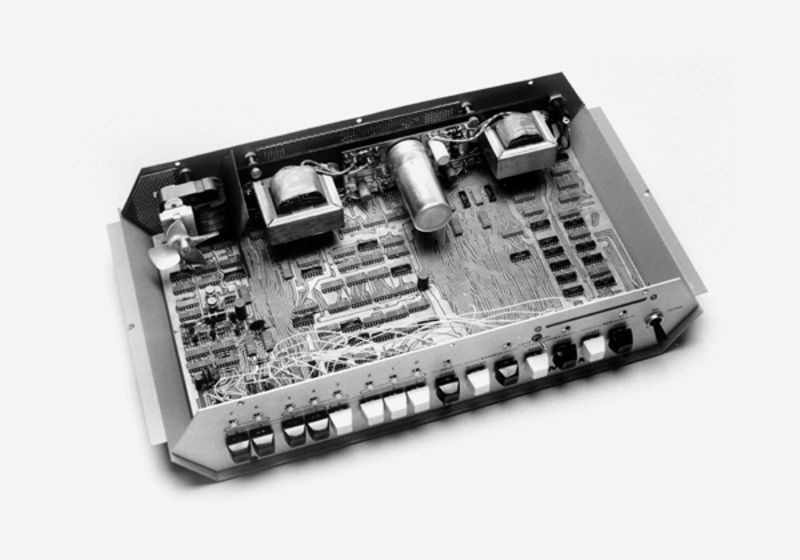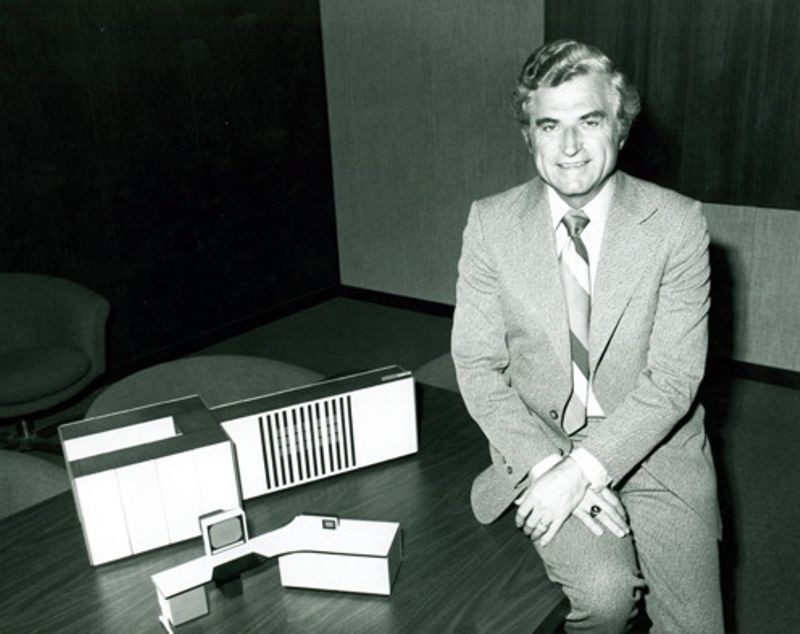
Gene Amdahl with 470V/6 model
Amdahl Corporation introduces the Amdahl 470
Gene Amdahl, father of the IBM System/360, starts his own company, Amdahl Corporation, to compete with IBM in mainframe computer systems. The 470V/6 was the company’s first product and ran the same software as IBM System/370 computers but cost less and was smaller and faster.
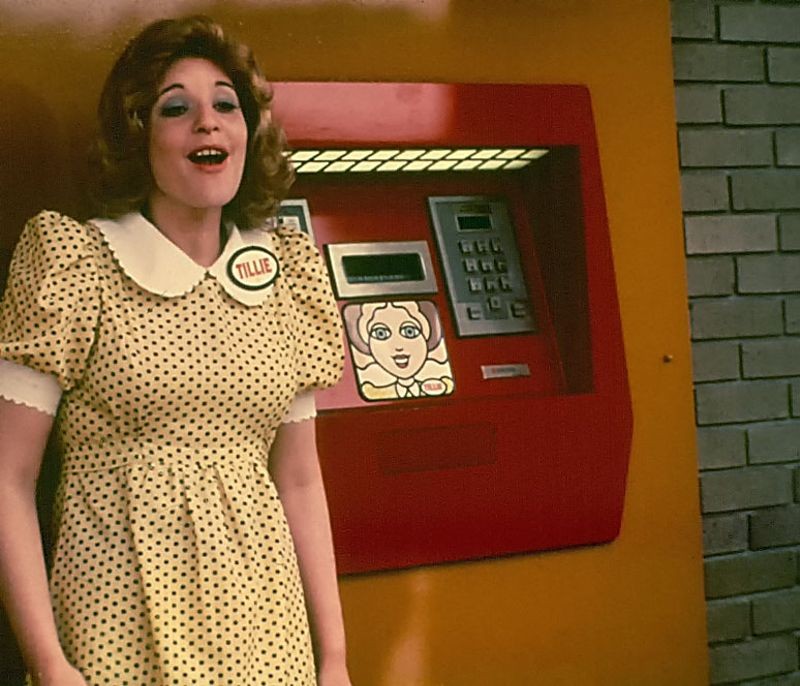
Tillie the Teller, Wells Fargo Bank
Banking Automation Reaches the Customer
The ERMA system had revolutionized behind-the-scenes check processing in the 1950s, spawning the funny letters still at the bottom of checks today. During the 1960s researchers in various countries have been working on bringing automation – and online transactions – to customers in the form of an Automated Teller Machine (ATM). Barclay’s Bank in the UK has likely been the first to put one in operation, in 1967. By decade’s end many systems are up or being planned in Europe and North America. The paper used by some of the first ATMs is slightly radioactive, to be machine readable. The 1970s will also see rapid growth in behind-the-scenes financial transaction networks, like SWIFT for wire transfers.
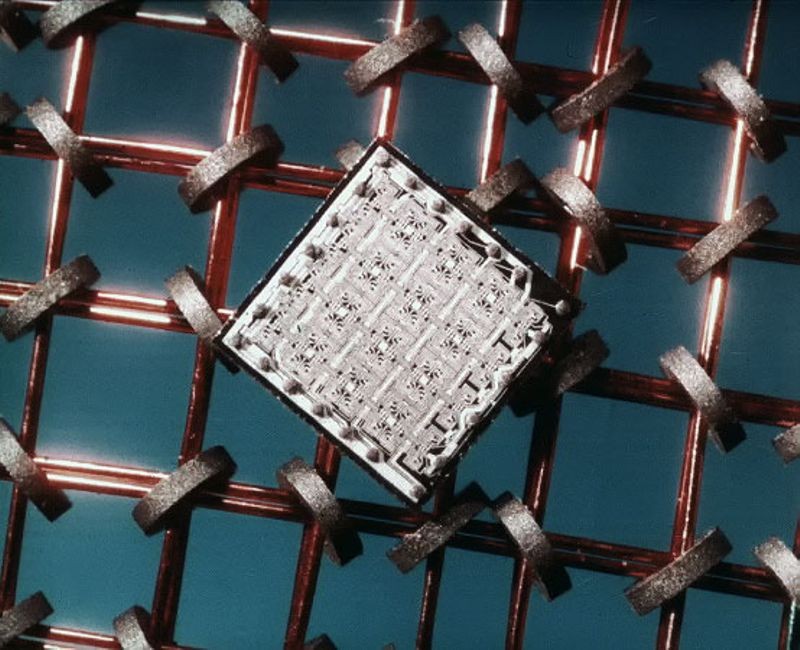
IC memory on top of core
First IBM computer to use semiconductor memory
In a departure from using magnetic core memory technology, IBM introduces the System 370 Model 145 mainframe computer, the company’s first all-semiconductor memory computer. The Model 145 could store an equivalent amount of data in half the space, compared to a computer using core memory.

Niklaus Wirth
Pascal is introduced
The Pascal programming language, named after Blaise Pascal, a French physicist, mathematician and inventor turned philosopher, is introduced by Professor Niklaus Wirth. His aim with Pascal was to develop a programming language applicable to both commercial and scientific applications, and which could also be used to teach programming techniques to college students. It was closely based on ALGOL 60, which Wirth had also helped to develop.
Shakey the robot
SRI International´s Shakey robot becomes the first mobile robot controlled by artificial intelligence. Equipped with sensing devices and driven by a problem-solving program called STRIPS, the robot found its way around the halls of SRI by applying information about its environment to a route. Shakey used a TV camera, laser range finder, and bump sensors to collect data, which it then transmitted to a DEC PDP-10 and PDP-15. The computer sent commands to Shakey over a radio link. Shakey could move at a speed of 2 meters per hour.
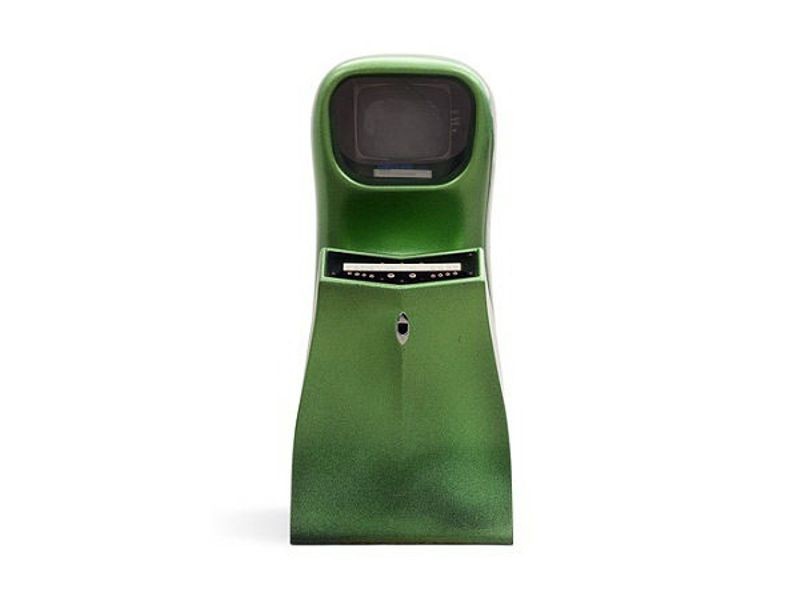
Computer Space arcade game
Computer Space is released
The cult success of Steve Russell’s SpaceWar! and other early space battle games led Nolan Bushnell and Ted Dabney to design Computer Space, one of the earliest electronic arcade games. Using no microprocessor, RAM, or ROM, Computer Space was a simple technical design that still allowed for complex gameplay, so complex that many noted there was a steep learning curve involved in playing. While Computer Space did not sell well, it was featured in films like Jaws and Soylent Green.
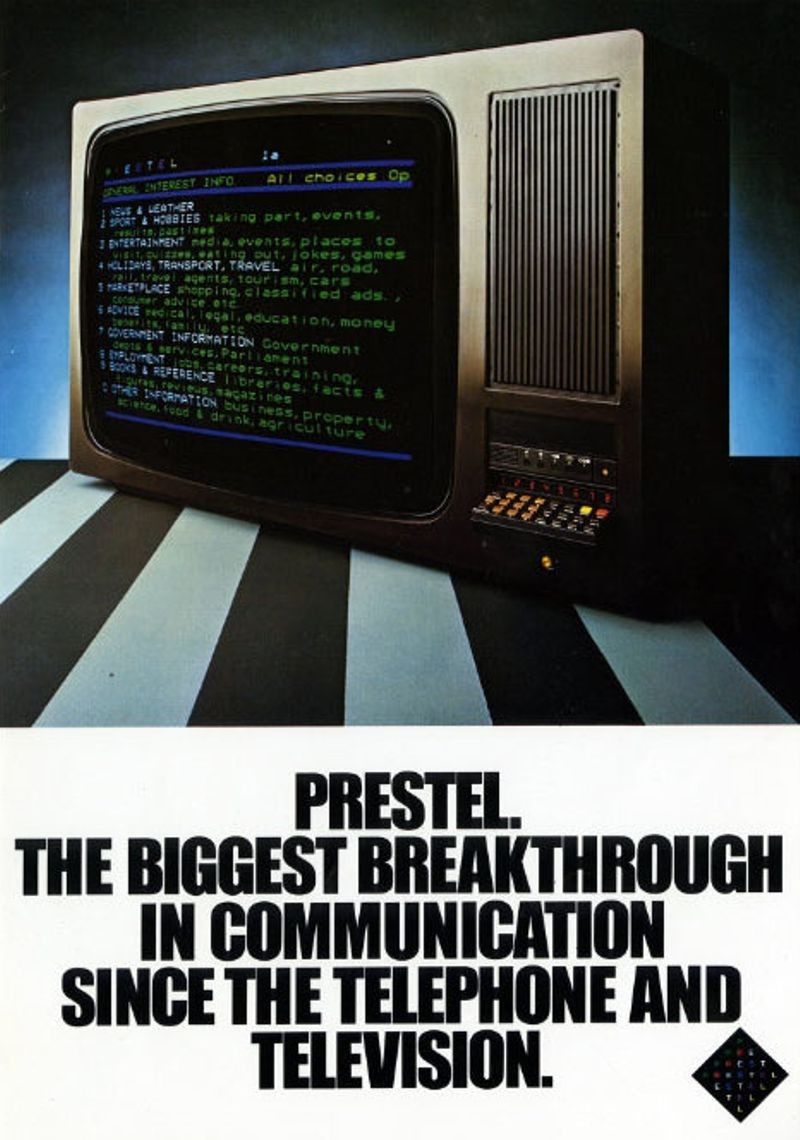
Brochure for the UK’s Prestel videotex system
Europe and the First Mass-Market “Webs”
By1971 Sam Fedida at the British Post Office and teams at the BBC and the IBA (Independent Broadcasting Association) have started developing Web-like information systems that use televisions for display. The two latter systems, based on work by Philips, broadcast data on an unused portion of the TV signal. They evolve into the Teletext information services found on most European TVs into the 2000s. Sam Fedida’s videotex standard at the Post Office (which also runs the telephone system) uses phone lines, and has high ambitions for broad-reaching uses like today’s Web. It becomes the foundation of England’s Prestel and, later, France’s wildly successful Minitel.
First Kenbak-1 is sold
One of the earliest personal computers, the Kenbak-1 is advertised for $750 in Scientific American magazine. Designed by John V. Blankenbaker using standard medium– and small-scale integrated circuits, the Kenbak-1 relied on switches for input and lights for output from its 256-byte memory. In 1973, after selling only 40 machines, Kenbak Corporation closed its doors.

HP-35 handheld calculator
Hewlett-Packard introduces the HP-35
Initially designed for internal use by HP employees, co-founder Bill Hewlett issues a challenge to his engineers in 1971: fit all of the features of their desktop scientific calculator into a package small enough for his shirt pocket. They did. Marketed as “a fast, extremely accurate electronic slide rule” with a solid-state memory similar to that of a computer, the HP-35 distinguished itself from its competitors by its ability to perform a broad variety of logarithmic and trigonometric functions, to store more intermediate solutions for later use, and to accept and display entries in a form similar to standard scientific notation. The HP-35 helped HP become one of the most dominant companies in the handheld calculator market for more than two decades.
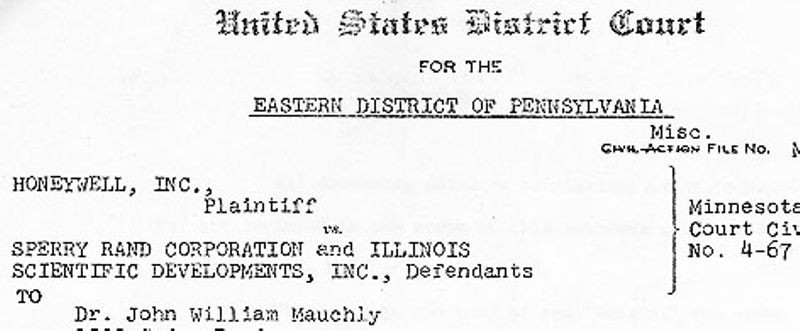
Honeywell, Inc. vs. Sperry Rand court document
Honeywell vs. Sperry Rand trial begins
In 1964, Sperry Rand Corporation received a patent, initially filed by J. Presper Eckert and John Mauchly, for the ENIAC computer developed during World War II. Sperry Rand sued Honeywell on claims of patent infringement, while Honeywell filed a suit charging Sperry Rand with monopolistic practices and fraud, seeking to invalidate the patent. Judge John Sirica ruled that Sperry Rand’s patent was unenforceable, partly due to problems with the filing by Eckert and Mauchly, as well as previous publications such as John von Neumann’s First Draft of a Report on the EDVAC. Perhaps the most significant finding was that “Eckert and Mauchly did not themselves invent the automatic electronic computer, but instead derived that subject matter from one Dr. John Vincent Atanasoff.” The ruling placed the idea for the electronic digital computer in the public domain so that any company could pursue computer design and manufacture without having to pay royalties for the basic idea of the computer.
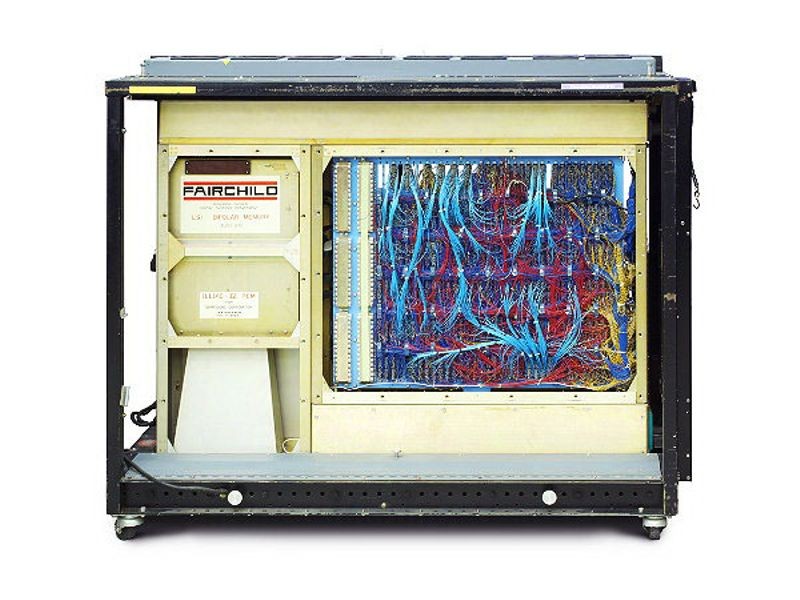
Fairchild bipolar memory unit for the ILLIAC IV
ILLIAC IV supercomputer
The ILLIAC IV supercomputer is delivered to NASA Ames Research Center at Moffett Field, California. One Fairchild-built Processing Element Memory (PEM), which stores 16,834 bytes, was in each of ILLIAC IV’s 64 processors. The 131,072-bit PEM was built by Fairchild using their new 256-bit bipolar SRAM chips. This was the first commercial use of commodity semiconductor memory in a large computer system.
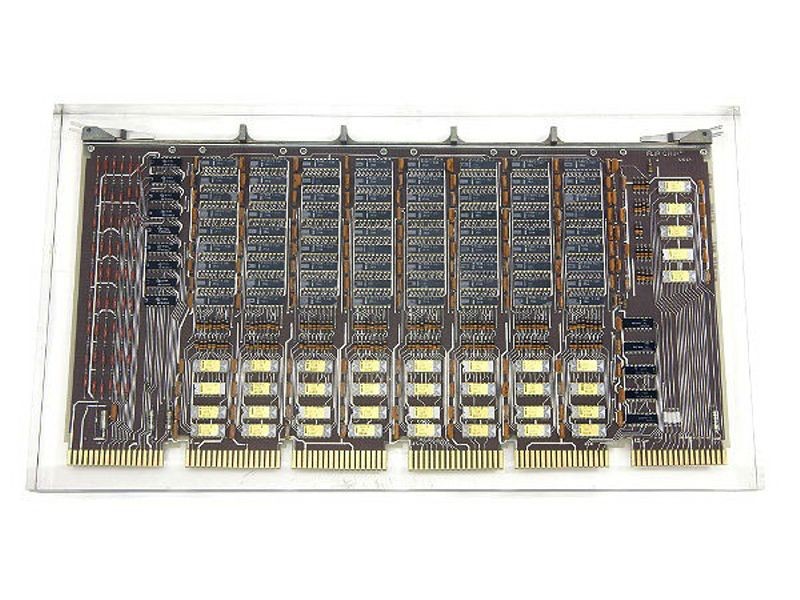
DEC PDP-11 minicomputer memory board with Intel 1103 memory chips
Intel 1103 memory chip
The introduction of the 1 KB Intel 1103 memory chip marks both the beginning of the end for the use of magnetic core in computers — in use since the mid-1950s — and the start of the semiconductor dynamic random-access memory (DRAM) integrated circuit memory. The 1103 sold slowly at first, but this likely helped the development team at Intel, which was still ironing out details about the chip’s specifications after its initial release. However, at a price of 1¢ per bit and with a speed compatible with existing logic circuits, sales soon skyrocketed.
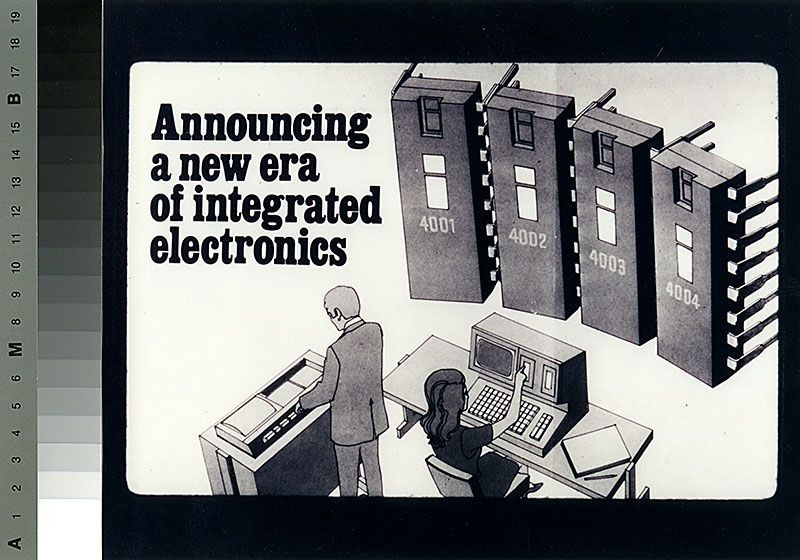
Advertisement for Intel’s 4004
Computer History Museum
Intel introduces the first microprocessor
The first advertisement for a microprocessor, the Intel 4004, appears in Electronic News. Developed for Busicom, a Japanese calculator maker, the 4004 had 2250 transistors and could perform up to 90,000 operations per second in four-bit chunks. Federico Faggin led the design and Ted Hoff led the architecture.
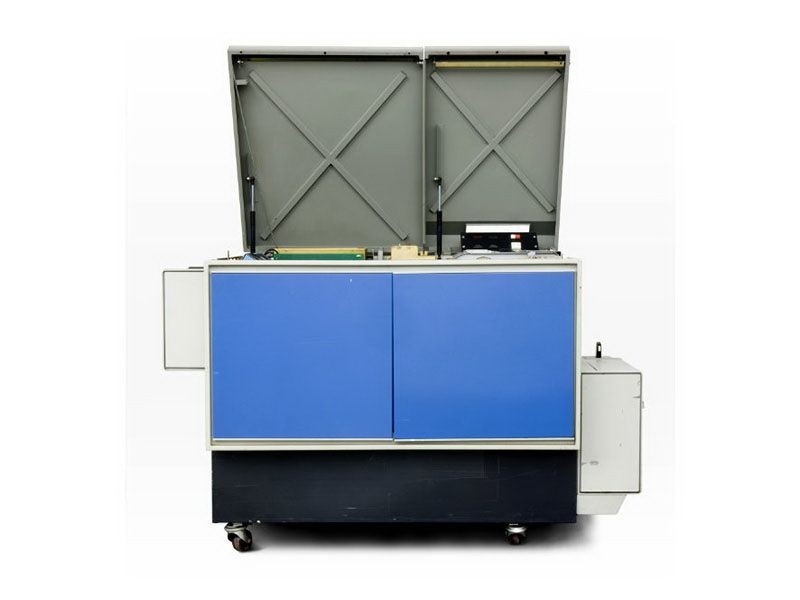
Dover laser printer
Laser printer invented at Xerox PARC
Xerox PARC physicist Gary Starkweather realizes in 1967 that exposing a copy machine’s light-sensitive drum to a paper original isn’t the only way to create an image. A computer could “write” it with a laser instead. Xerox wasn’t interested. So in 1971, Starkweather transferred to Xerox Palo Alto Research Center (PARC), away from corporate oversight. Within a year, he had built the world’s first laser printer, launching a new era in computer printing, generating billions of dollars in revenue for Xerox. The laser printer was used with PARC’s Alto computer, and was commercialized as the Xerox 9700.

Ray Tomlinson
Networked Email as an Early “Killer App”
In the early 1970s email makes the jump from timesharing systems – each with perhaps a couple of hundred users – to the newly burgeoning computer networks. Suddenly, messages are free to travel anywhere the network goes, and email explodes. Ray Tomlinson of Bolt, Beranek and Newman chooses the now-iconic “@” sign for his networked email protocol on the ARPAnet and by 1973, well over 50% of traffic on that research-oriented network is email. Nearly all other networks add email features. On the PLATO educational system, the email features of PLATO Notes are a runaway success both for person-to-person mails and as the basis for discussion boards.
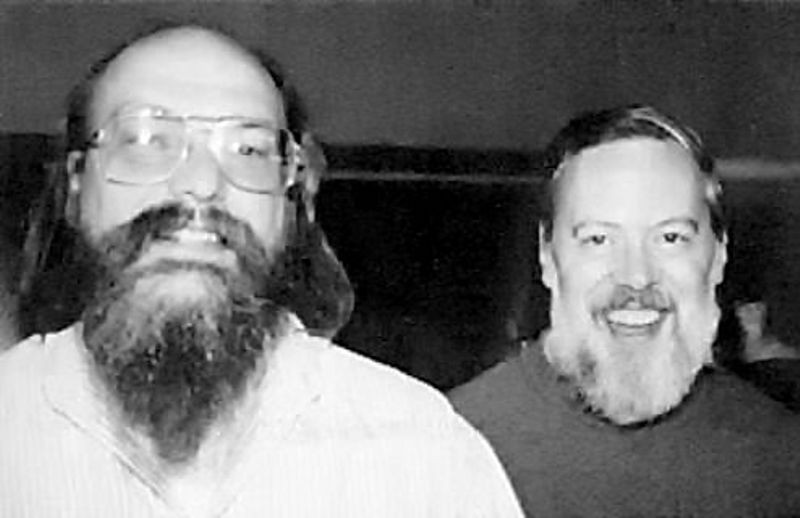
Ken Thompson (L) and Dennis Ritchie (R)
C programming language is released
The C programming language is released. Dennis Ritchie and his team created C based on the earlier language BCPL (Basic Combined Programming Language) and soon after re-wrote the source code for Unix in C. As such, Unix was easily ported to other computers and spread swiftly. C is still widely used today.

Earth’s moon
LUNAR natural language information retrieval system
LUNAR, a natural language information retrieval system is completed by William Woods, Ronal Kaplan and Bonnie Nash-Webber at Bolt, Beranek and Newman (BBN). LUNAR helped geologists access, compare and evaluate chemical-analysis data on moon rock and soil composition from the Apollo 11 mission. Woods was the manager of the BBN AI Department throughout the 1970s and into the early 1980s.
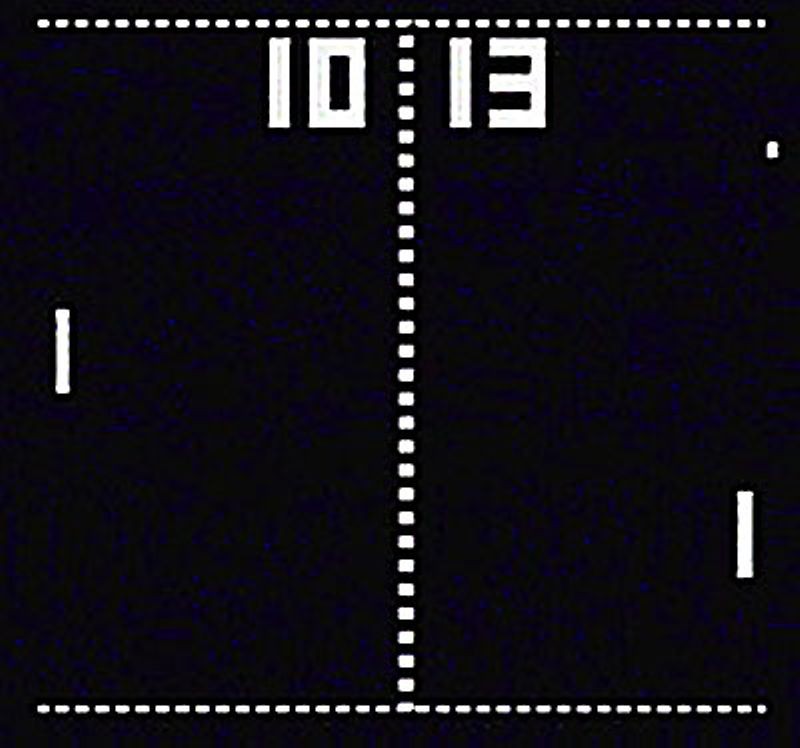
Pong screenshot
Pong is released
California entrepreneur Nolan Bushnell hires young engineer Al Alcorn to design a car-driving game, but when it becomes apparent that this is too ambitious for the time, he has Alcorn design a version of Ping Pong instead. The game was tested in bars in Grass Valley and Sunnyvale, California, where it proved very popular. Pong would revolutionize the arcade industry and launch the modern video game era.
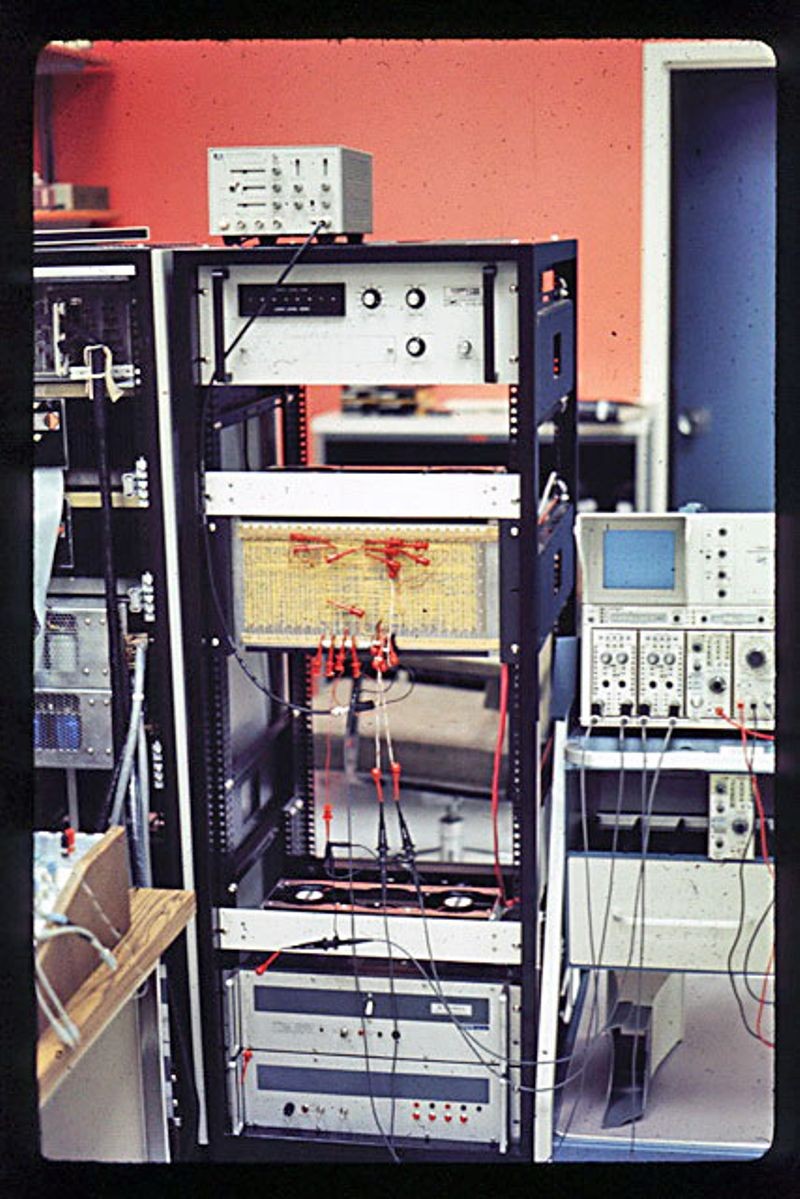
SuperPaint drawing system
SuperPaint is completed
SuperPaint is probably the first digital computer drawing system to use a frame buffer—a special high-speed memory—and the ancestor of all modern paint programs. It could create sophisticated animations, in up to 16.7 million colors, had adjustable paintbrushes, video magnification, and used a graphics tablet for drawing. It was designed by Richard Shoup and others at the Xerox Palo Alto Research Center (PARC). Its designers won a technical Academy Award in 1998 for their invention.
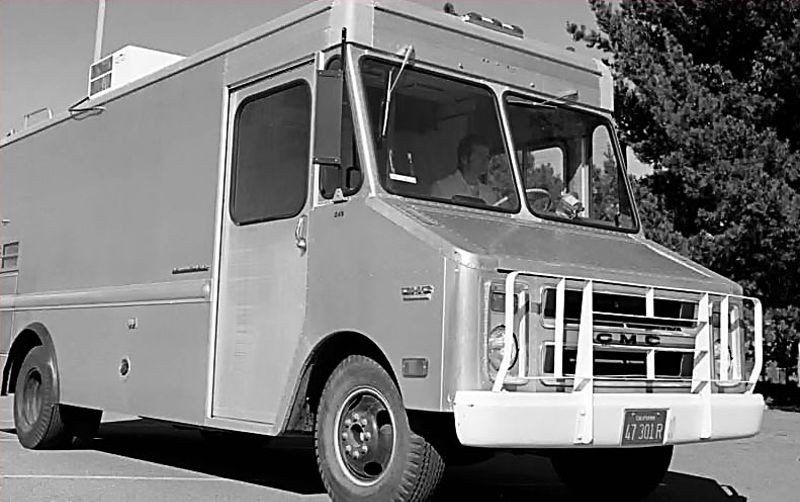
SRI Packet radio research van, 1970s
Birth of modern mobile networks
In 1973, ARPA funds the outfitting of a packet radio research van at SRI to develop standards for a Packet Radio Network (PRNET). As the unmarked van drives through the San Francisco Bay Area, stuffed full of hackers and sometimes uniformed generals, it is pioneering wireless, packet-switched digital networks, including the kind your mobile phone uses today. A related set of experiments test out Voice Over IP (like the later Skype). The van will also play a huge role in 1977 as a major birthplace of the Internet.
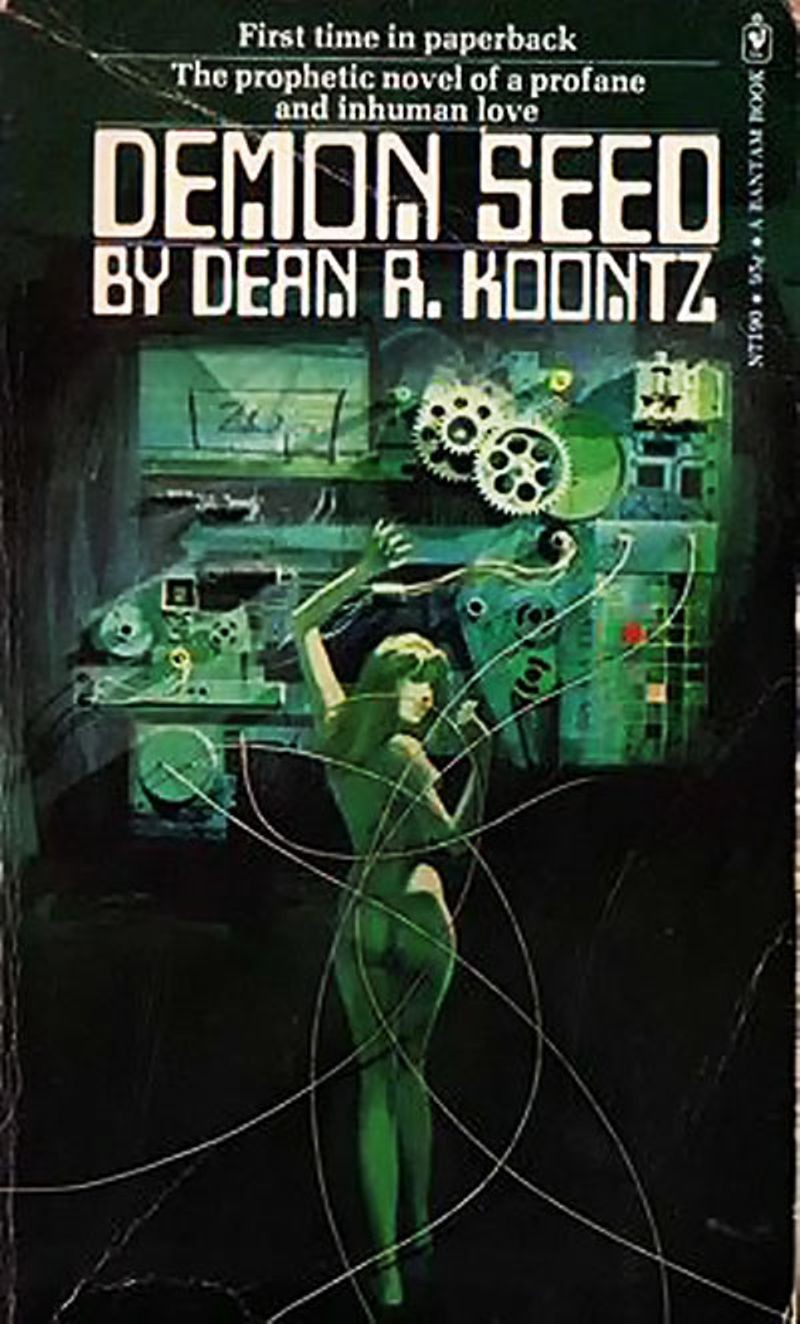
Demon Seed by Dean Koontz
Dean Koontz publishes Demon Seed
Author Dean Koontz’s Demon Seed is one of the most influential computer horror stories ever written. It told the story of the computer Proteus and its dangerous obsession with Susan, a wealthy recluse. Proteus imprisoned Susan in her home after taking over her home control system, and attempted to impregnate her. A best seller, Demon Seed was adapted as a film in 1977 by Donald Cammell and starred Julie Christie.

IBM 3340 data module
IBM 3340 data module
IBM’s 3340 data module is introduced. It was based on “Winchester” technology that put the read/write heads, platters and access mechanism in a sealed removable unit. Low-mass heads landed safely on the lubricated platter surface when the power was off. Most hard disks do that now, but are no longer removable. Winchester technology drive arrays were IBM’s last storage system with large removable disk packs. Strings of two to eight 3340 drives could be attached to an IBM mainframe computer, providing a storage capacity of up to 280 million bytes per string.
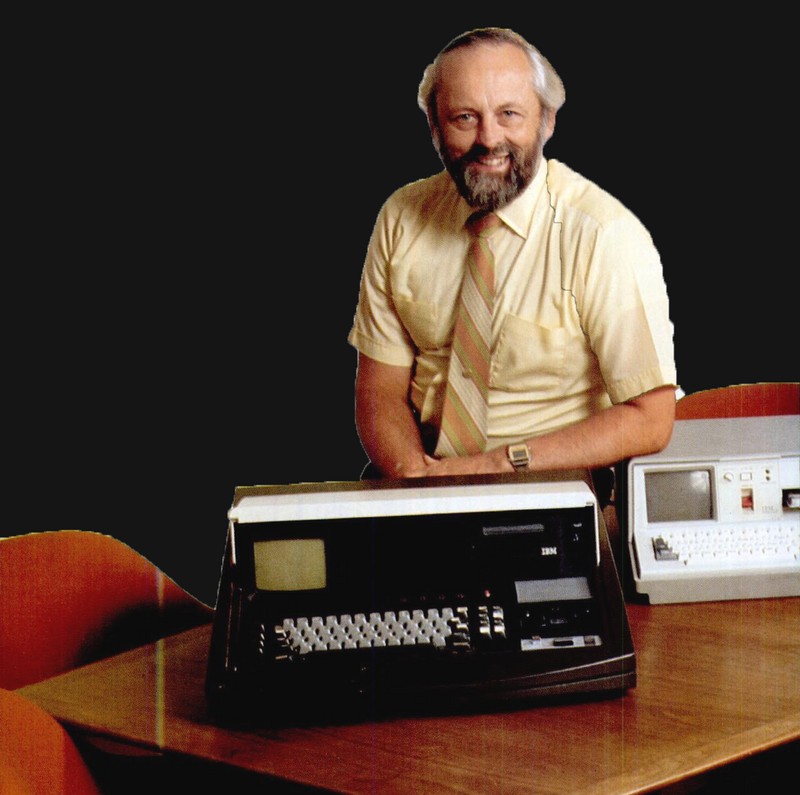
Dr. Paul Friedl with SCAMP prototype
IBM SCAMP is developed
Under the direction of engineer Dr. Paul Friedl, the Special Computer APL Machine Portable (SCAMP) personal computer prototype is developed at IBM’s Los Gatos and Palo Alto, California laboratories. IBM’s first personal computer, the system was designed to run the APL programming language in a compact, briefcase-like enclosure which comprised a keyboard, CRT display, and cassette tape storage. Friedl used the SCAMP prototype to gain approval within IBM to promote and develop IBM’s 5100 family of computers, including the most successful, the 5150, also known as the IBM Personal Computer (PC), introduced in 1981. From concept to finished system, SCAMP took only six months to develop.

EIN (European Informatics Network), 1973
Inventing the Internet
Early networks successfully connected computers. But different kinds of networks couldn’t link to each other, limiting the size of online communities. So, the next challenge has been creating “networks of networks,” a process called internetworking or internetting.
France’s CYCLADES and Britain’s NPL network are experimenting with internetworking by 1973 with the European Informatics Network (EIN). Xerox PARC begins linking Ethernets with other networks using its PUP (PARC Universal Packet) protocol the same year. Both these efforts will influence the development of ARPA’s TCP/IP internetworking protocol, first sketched out in 1973 by Vint Cerf and Bob Kahn. ARPA has a practical need to link its original ARPAnet with its newer networks like the Packet Radio Network (PRNET) and Satellite Network (SATNET). In 1977 Cerf and Kahn will link the three networks and prove the efficacy of their TCP/IP protocol in a dramatic round-the-world transmission from a moving vehicle, the SRI Packet Radio Research van.
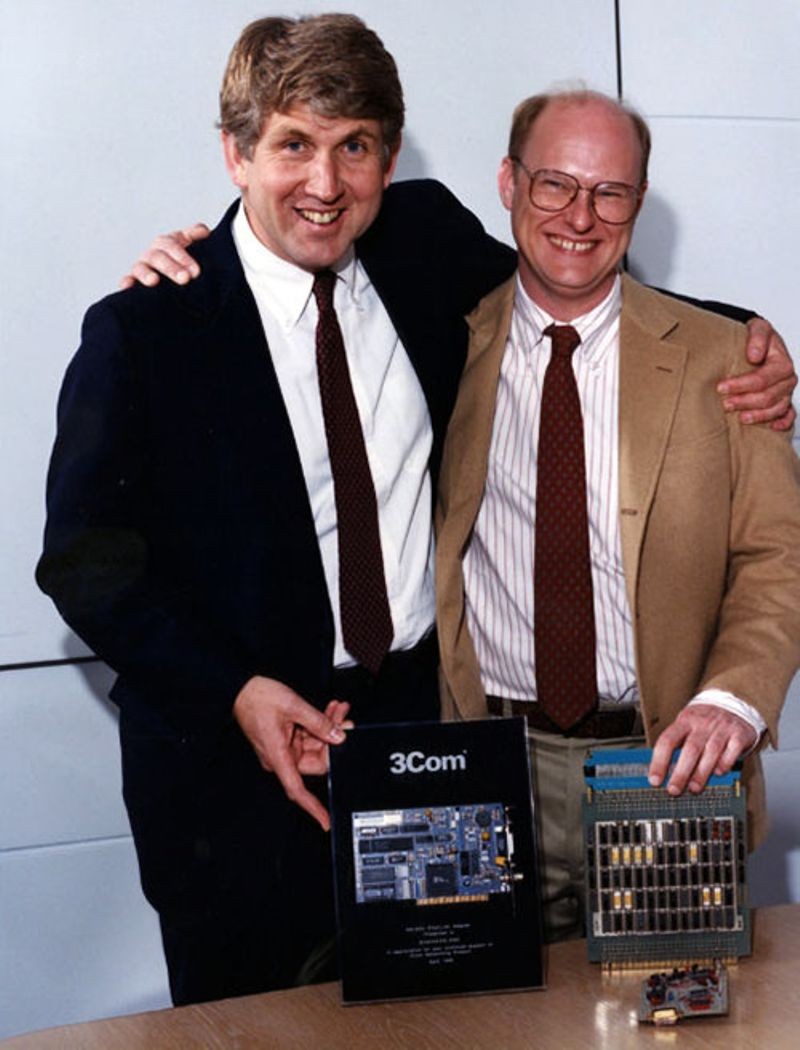
Robert Metcalfe and Dave Boggs, creators of Ethernet
Linking the Office: Ethernet and Local Networks
Computers have to communicate down the hall, as well as globally. Local area networks (LANs) evolved from the early links to peripheral devices such as terminals and printers. 1973 marks the birth of the standard that will eventually prevail: Ethernet. Created as part of Xerox PARC’s sweeping vision of an “office of the future” comprised of connected PCs, Ethernet adapts techniques from the wireless ALOHAnet to treat cables as a passive medium, like the air (“ether”) between radio stations. But it will have stiff competition from various local network standards including IBM’s formidable Token Ring and Datapoint’s ARCNET.

Micral
Micral is released
Based on the Intel 8008 microprocessor, the Micral is one of the earliest commercial, non-kit personal computers. Designer Thi Truong developed the computer while Philippe Kahn wrote the software. Truong, founder and president of the French company R2E, created the Micral as a replacement for minicomputers in situations that did not require high performance, such as process control and highway toll collection. Selling for $1,750, the Micral never penetrated the U.S. market. In 1979, Truong sold R2E to Bull.

TV Typewriter
The TV Typewriter plans are published
Designed by Don Lancaster, the TV Typewriter is an easy-to-build kit that can display alphanumeric information on an ordinary television set. It used $120 worth of electronics components, as outlined in the September 1973 issue of hobbyist magazine Radio Electronics. The original design included two memory boards and could generate and store 512 characters as 16 lines of 32 characters. A cassette tape interface provided supplementary storage for text. The TV Typewriter was used by many small television stations well in the 1990s.
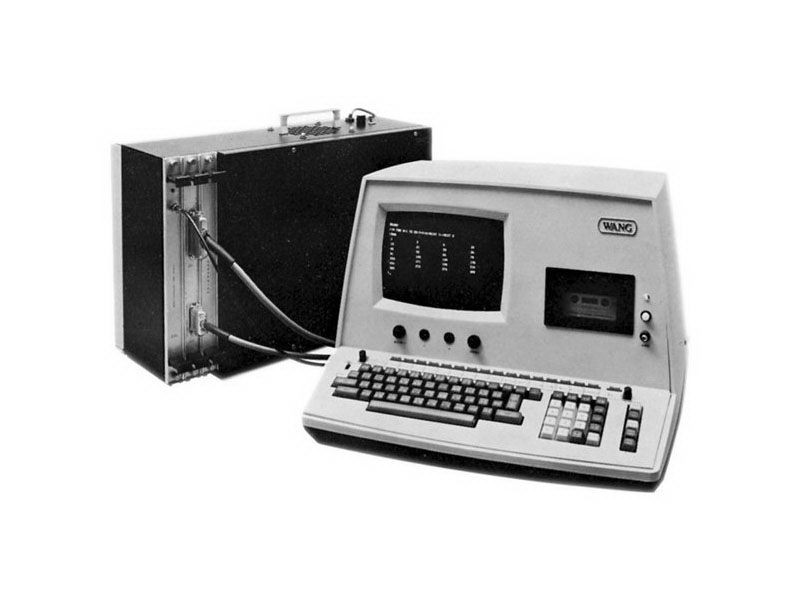
Wang 2200
Wang Laboratories releases the Wang 2200
Wang was a successful calculator manufacturer, then a successful word processor company. The 1973 Wang 2200 makes it a successful computer company, too. Wang sold the 2200 primarily through Value Added Resellers, who added special software to solve specific customer problems. The 2200 used a built-in CRT, cassette tape for storage, and ran the programming language BASIC. The PC era ended Wang’s success, and it filed for bankruptcy in 1992.
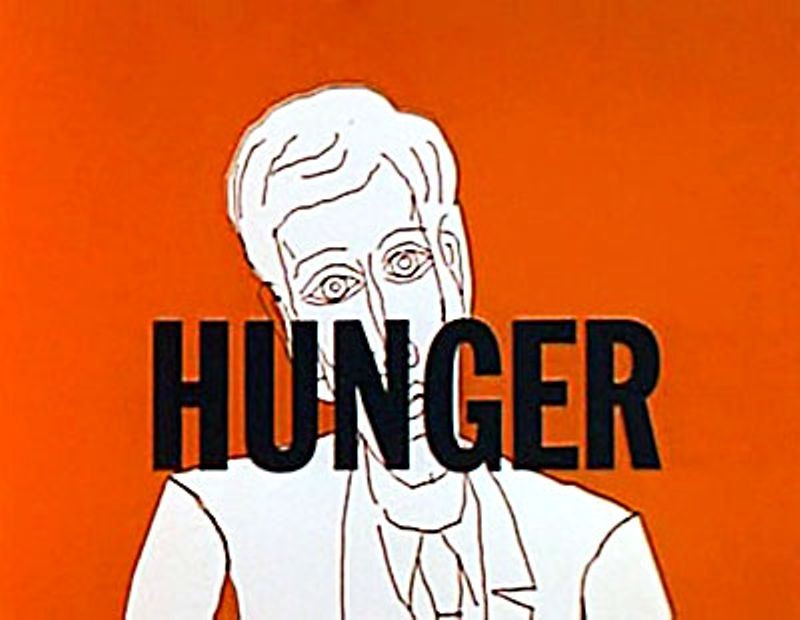
Title screen from Hunger
La Faim (Hunger) debuts
Filmmaker Peter Foldes, an international figure in animation since the 1950s, begins collaborating with Canada’s National Research Council in 1969. Working with computer scientist Nestor Burtnyk, Foldes directed this ten-minute film dealing with the idea of food inequality. Using the animation concept of key frame animation, where an animator would produce the most important frames and assistants would fill in the gaps, Burtnyk designed a program in which the computer filled in the gaps, producing an effect that made the images seem to glide from one to another. La Faim would win many international awards, including a special Jury Prize at the 1974 Cannes Film Festival, and an Academy Award nomination.
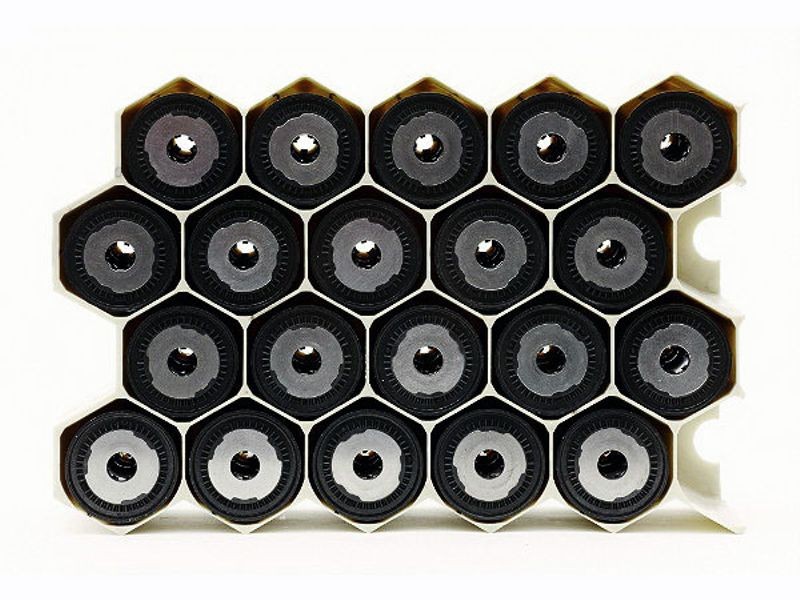
IBM 3850 mass storage system cartridges
IBM 3850 mass storage system
The IBM 3850 mass storage system is introduced. The largest 3850 storage system held 4,720 cartridges, stored 236 GB, and was 20 feet long. IBM claimed online magnetic disk storage was ten times more costly than the 3850. Released as an alternative to a manual tape reel library, the system used 4-inch long cylinders of magnetic tape that were retrieved and replaced by a robotic arm. Those cylinders were stored in hexagonal, “honeycomb” bins to reduce space.
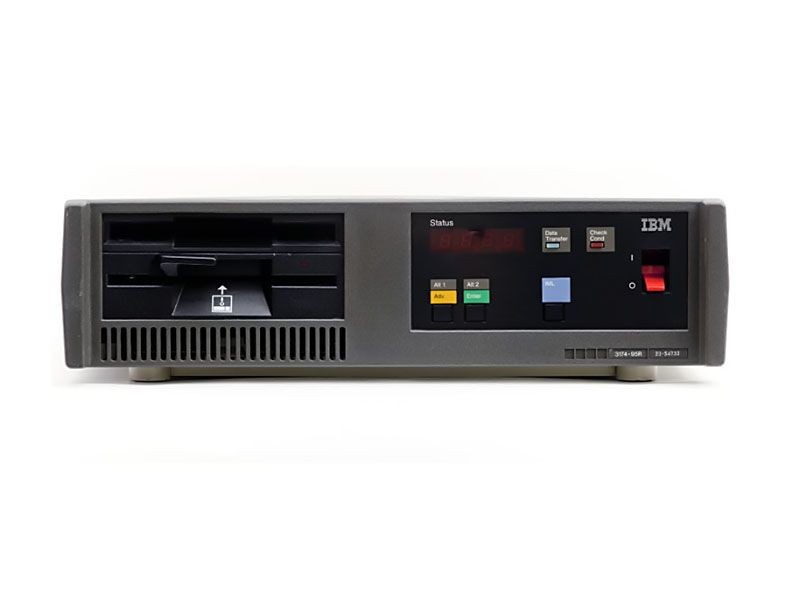
IBM 3174 Systems Network Architecture (SNA) controller
IBM announces SNA (Systems Network Architecture)
IBM has been building hierarchical, special-purpose networks since the SAGE system in the late 1950s and SABRE not long after. In 1974 it announces Systems Network Architecture (SNA), a set of protocols designed for less centralized networks. SNA will evolve into an internet-like network of networks, albeit one reserved for those that were SNA compliant. DEC and Xerox will also begin commercializing their own proprietary networks, DECNET and XNS. At it’s peak around 1990, IBM’s SNA will quietly carry most of the world’s networking traffic.

Scelbi 8H
Scelbi advertises its 8H computer
The first commercially advertised US computer based on a microprocessor (the Intel 8008,) the Scelbi has 4 KB of internal memory and a cassette tape interface, as well as Teletype and oscilloscope interfaces. Scelbi aimed the 8H, available both in kit form and fully assembled, at scientific, electronic, and biological applications. In 1975, Scelbi introduced the 8B version with 16 KB of memory for the business market. The company sold about 200 machines, losing $500 per unit.
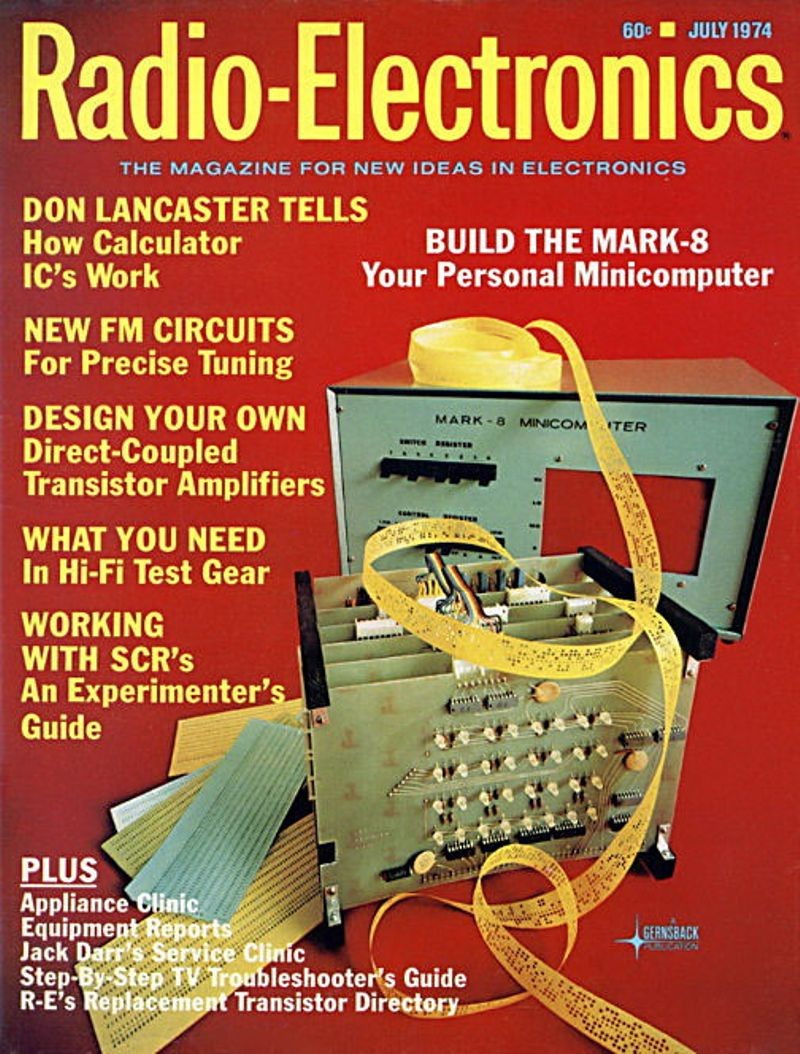
Mark-8 featured on Radio-Electronics July 1974 cover
The Mark-8 appears in the pages of Radio-Electronics
The Mark-8 “Do-It-Yourself” kit is designed by graduate student John Titus and uses the Intel 8008 microprocessor. The kit was the cover story of hobbyist magazine Radio-Electronics in July 1974 – six months before the MITS Altair 8800 was in rival Popular Electronics magazine. Plans for the Mark-8 cost $5 and the blank circuit boards were available for $50.
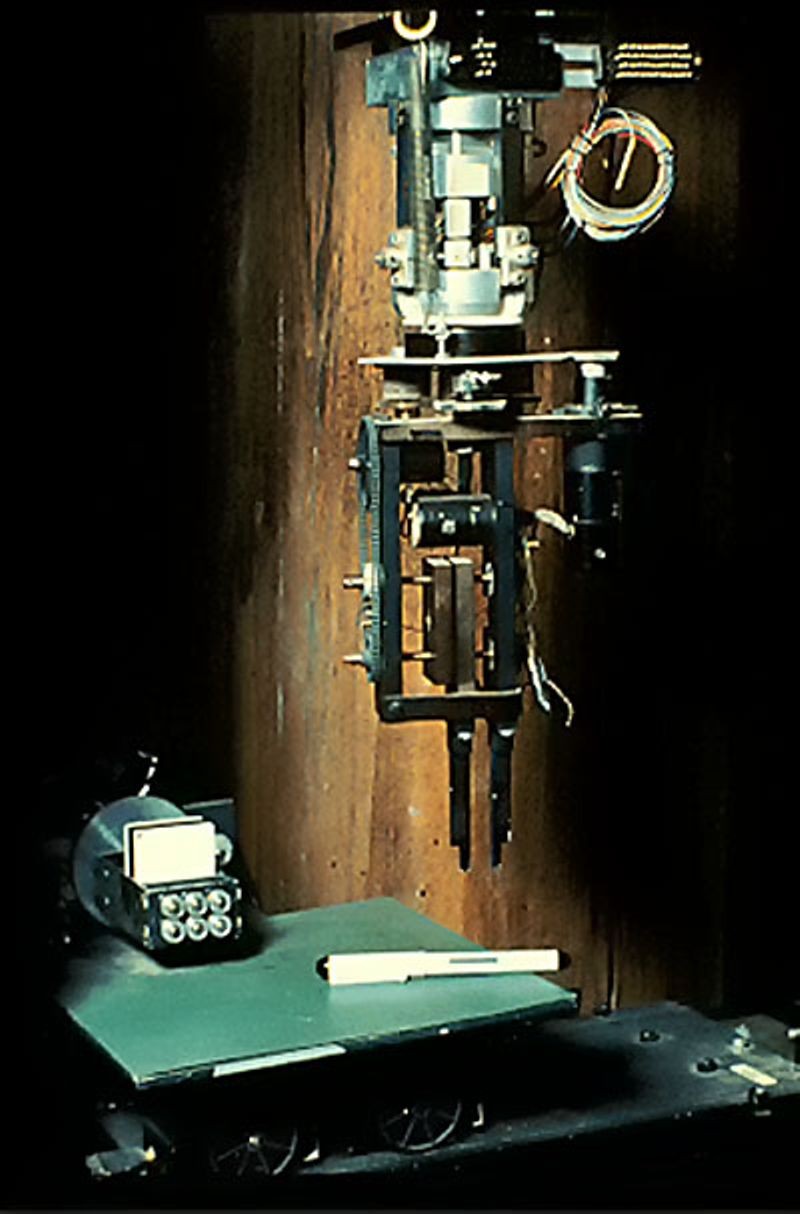
The Silver Arm
The Silver Arm
David Silver at MIT designs the Silver Arm, a robotic arm to do small-parts assembly using feedback from delicate touch and pressure sensors. The arm´s fine movements approximate those of human fingers.

Xerox Alto
Xerox PARC Alto introduced
The Alto is a groundbreaking computer with wide influence on the computer industry. It was based on a graphical user interface using windows, icons, and a mouse, and worked together with other Altos over a local area network. It could also share files and print out documents on an advanced Xerox laser printer. Applications were also highly innovative: a WYSISYG word processor known as “Bravo,” a paint program, a graphics editor, and email for example. Apple’s inspiration for the Lisa and Macintosh computers came from the Xerox Alto.
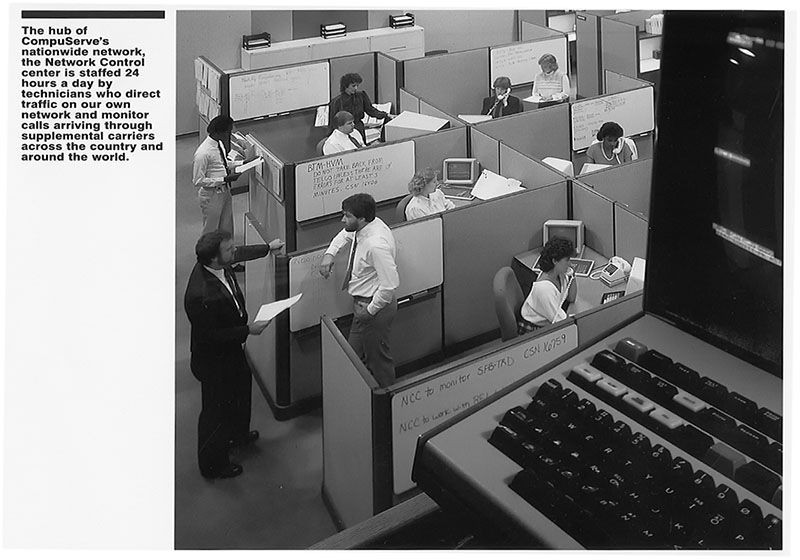
CompuServe’s Network Control center
Commercial Networks Multiply
The mid-1970s brings a number of commercial networks for corporate customers and professionals to choose from. Most are packet-switched, like Telenet, Tymnet, and other major players. The ill-fated Datran and a couple of others are circuit switched like a telephone system. Six year old CompuServe is also becoming a major supplier of corporate network services; it’s consumer-oriented CompuServe Information Service will follow at the end of the 1970s.
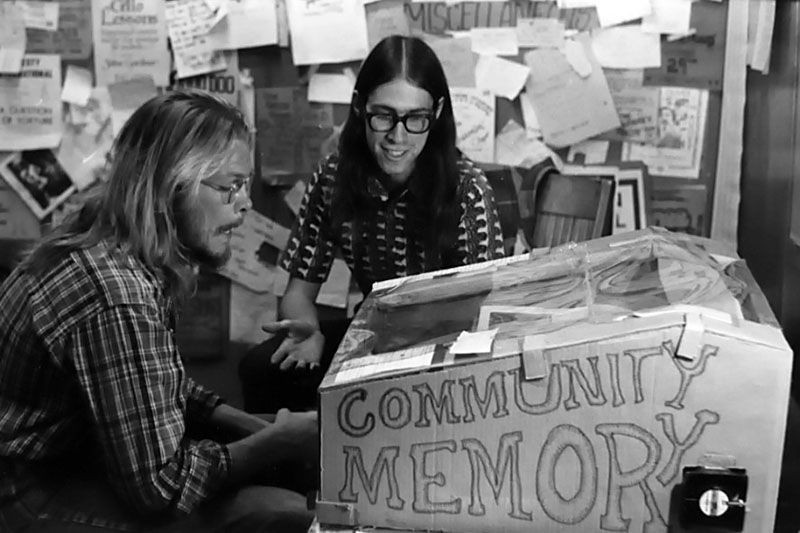
Community Memory terminal, Leopold’s Records, Berkeley
Community Memory
Anyone can walk up and use this terminal, connected to a timeshared mainframe computer, for posting messages and announcements. That’s a radical idea when computers are mostly inaccessible to ordinary people, and seen by the counterculture as tools of government and corporate power.
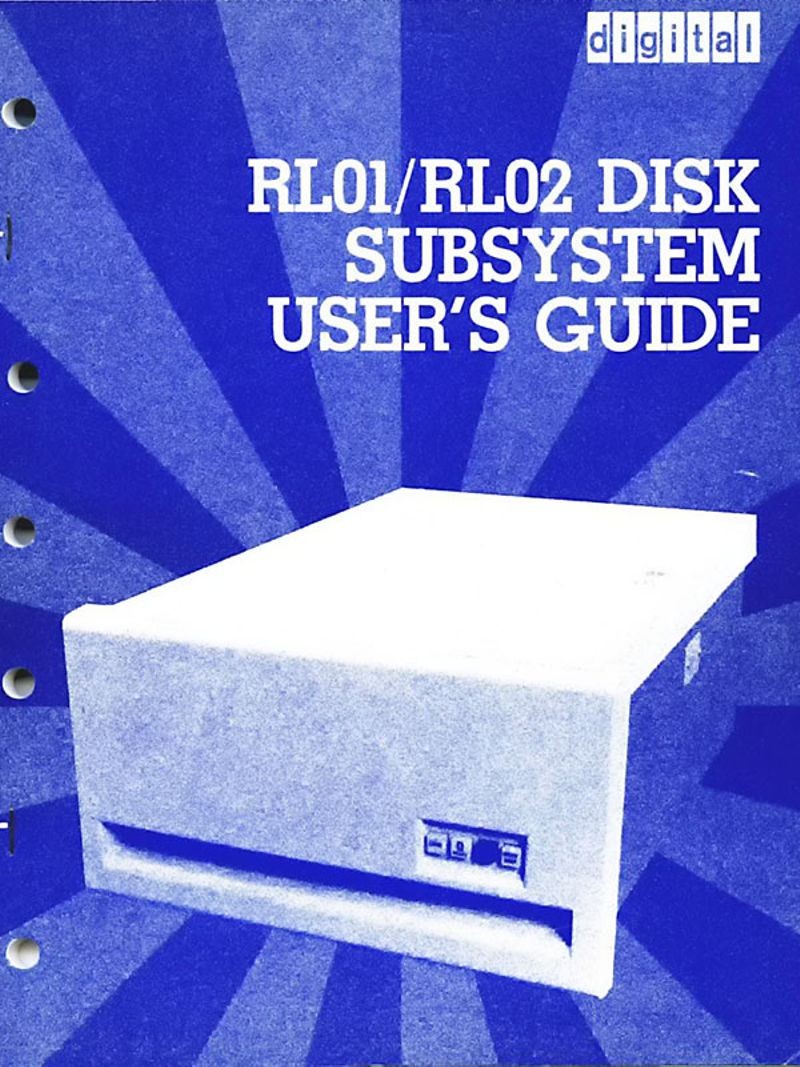
DEC RL01 User’s Guide
DEC RL01
The DEC RL01 is introduced as a successor to DEC’s RK05 drives. It was an attempt to lower maintenance costs while bolstering disk drive reliability. It was initially released with a 5 MB capacity, and two years later a 10 MB version was put on the market. Also, head alignment tools were removed, as maintenance on these parts was costly and time-consuming. Future disk drives largely adopted this feature.
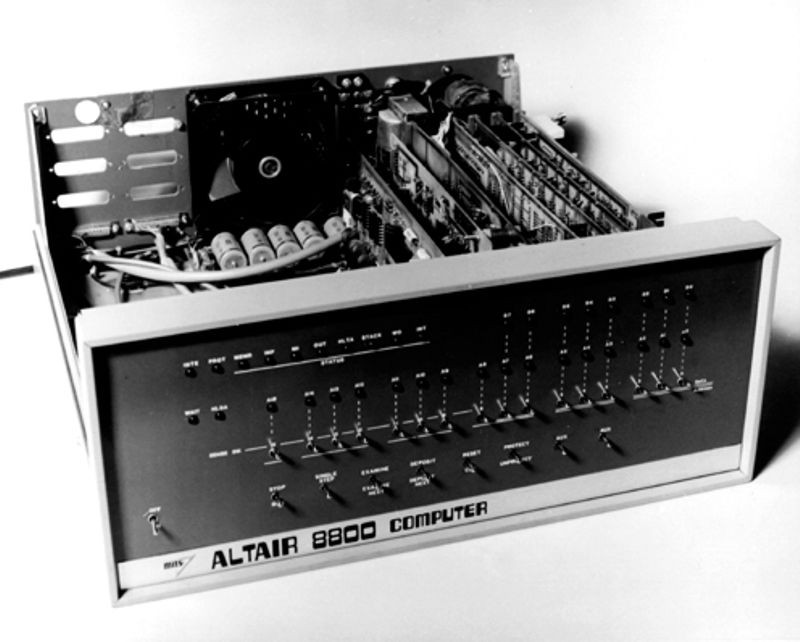
Altair 8800
MITS Altair 8800 kit appears in Popular Electronics
For its January issue, hobbyist magazine Popular Electronics runs a cover story of a new computer kit – the Altair 8800. Within weeks of its appearance, customers inundated its maker, MITS, with orders. Bill Gates and Paul Allen licensed their BASIC programming language interpreter to MITS as the main language for the Altair. MITS co-founder Ed Roberts invented the Altair 8800 — which sold for $297, or $395 with a case — and coined the term “personal computer”. The machine came with 256 bytes of memory (expandable to 64 KB) and an open 100-line bus structure that evolved into the “S-100” standard widely used in hobbyist and personal computers of this era. In 1977, MITS was sold to Pertec, which continued producing Altairs in 1978.
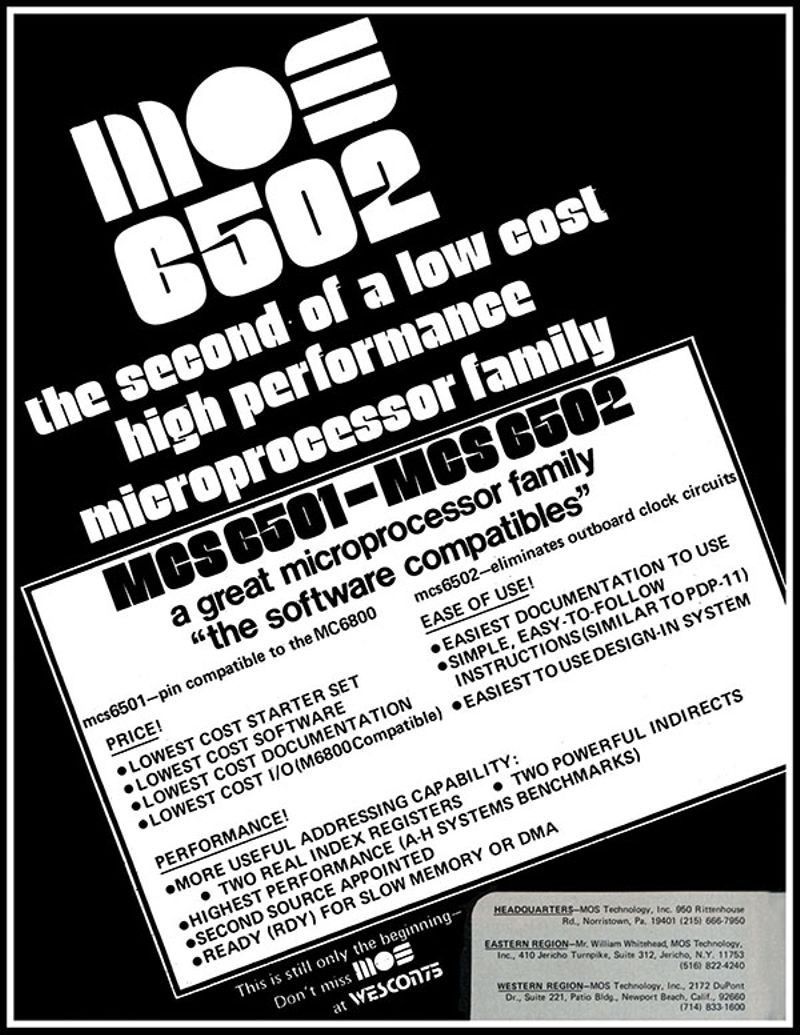
MOS 6502 ad from IEEE Computer, Sept. 1975
MOS 6502 is introduced
Chuck Peddle leads a small team of former Motorola employees to build a low-cost microprocessor. The MOS 6502 was introduced at a conference in San Francisco at a cost of $25, far less than comparable processors from Intel and Motorola, leading some attendees to believe that the company was perpetrating a hoax. The chip quickly became popular with designers of early personal computers like the Apple II and Commodore PET, as well as game consoles like the Nintendo Entertainment System. The 6502 and its progeny are still used today, usually in embedded applications.
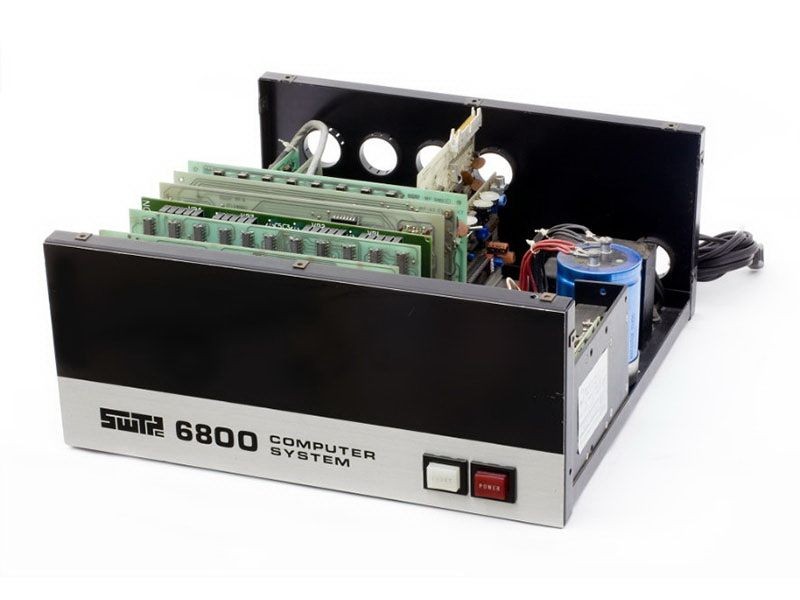
Southwest Technical Products 6800
Southwest Technical Products introduces the SWTPC 6800
Southwest Technical Products is founded by Daniel Meyer as DEMCO in the 1960s to provide a source for kit versions of projects published in electronics hobbyist magazines. SWTPC introduces many computer kits based on the Motorola 6800, and later, the 6809. Of the dozens of different SWTP kits available, the 6800 proved the most popular.
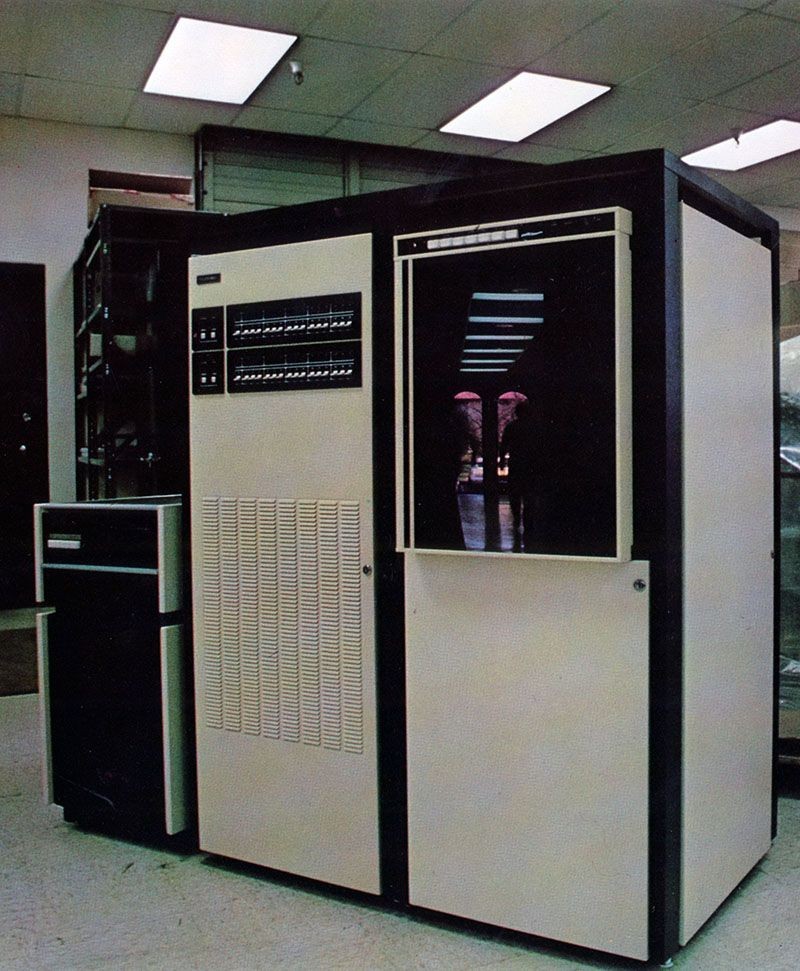
Dual-processor Tandem 16 system
Tandem Computers releases the Tandem-16
Tailored for online transaction processing, the Tandem-16 is one of the first commercial fault-tolerant computers. The banking industry rushed to adopt the machine, built to run during repair or expansion. The Tandem-16 eventually led to the “Non-Stop” series of systems, which were used for early ATMs and to monitor stock trades.
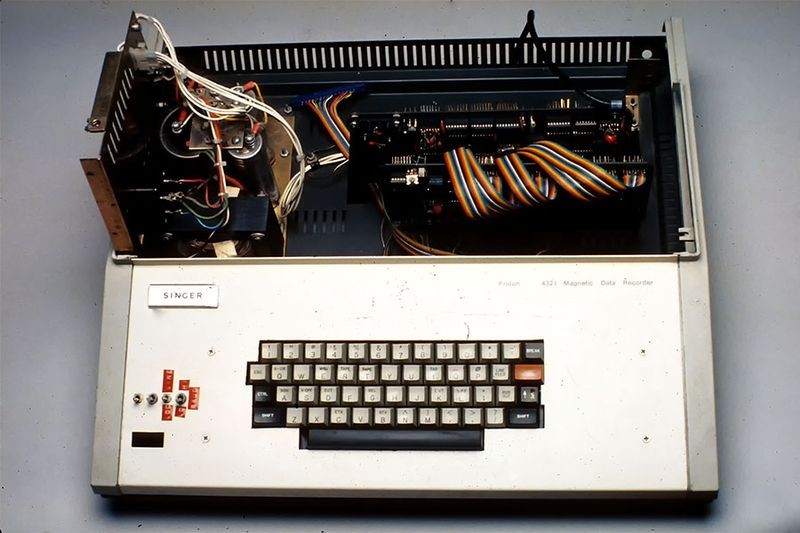
The Video Display Module (VDM)
VDM prototype built
The Video Display Module (VDM) marks the first implementation of a memory-mapped alphanumeric video display for personal computers. Introduced at the Altair Convention in Albuquerque in March 1976, the visual display module enabled the use of personal computers for interactive games.
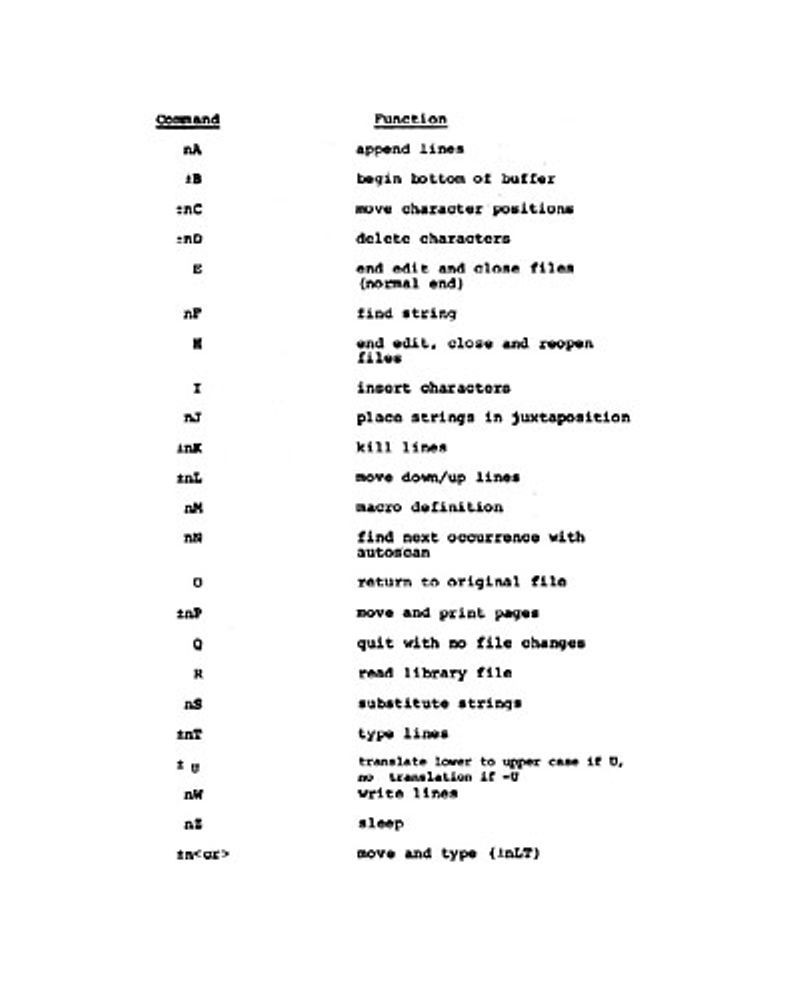
CP/M commands
CP/M is developed
Gary Kildall develops the first commercially successful operating system for microcomputers, CP/M. He and his wife established Intergalactic Digital Research (modestly dropping “Intergalactic” later) to market it. CP/M made it possible for one version of a program to run on a variety of computers built around eight-bit microprocessors. At one point Digital Research and Microsoft were approached by IBM about providing an operating system for its PC. Microsoft won the competition with its own operating system, called MS-DOS.
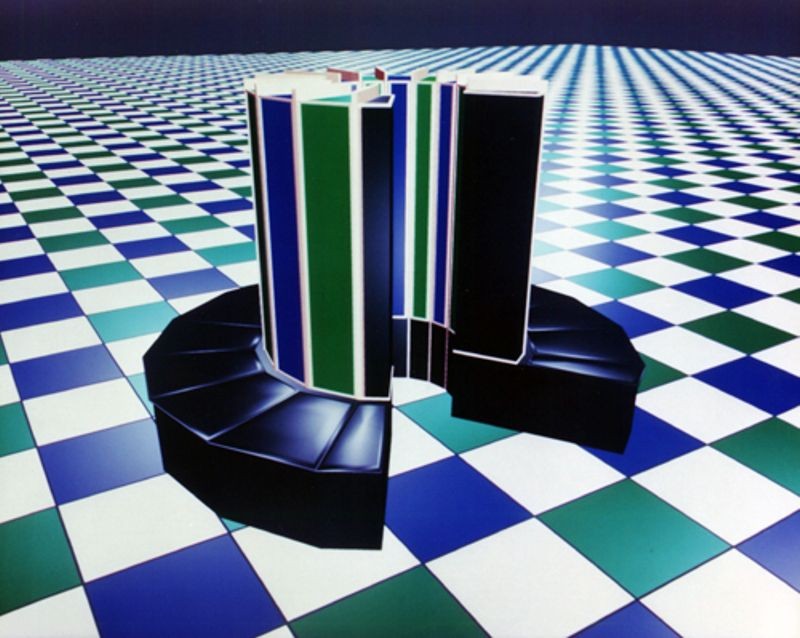
Cray I ‘Self-portrait’
Cray-1 supercomputer introduced
The fastest machine of its day, The Cray-1’s speed comes partly from its shape, a “C,” which reduces the length of wires and thus the time signals need to travel across them. High packaging density of integrated circuits and a novel Freon cooling system also contributed to its speed. Each Cray-1 took a full year to assemble and test and cost about $10 million. Typical applications included US national defense work, including the design and simulation of nuclear weapons, and weather forecasting.

Zilgo Z-80 microprocessor
Image by Gennadiy Shvets
Intel 8080 and Zilog Z-80
Intel and Zilog introduced new microprocessors. Five times faster than its predecessor, the 8008, the Intel 8080 could address four times as many bytes for a total of 64 kilobytes. The Zilog Z-80 could run any program written for the 8080 and included twice as many built-in machine instructions.
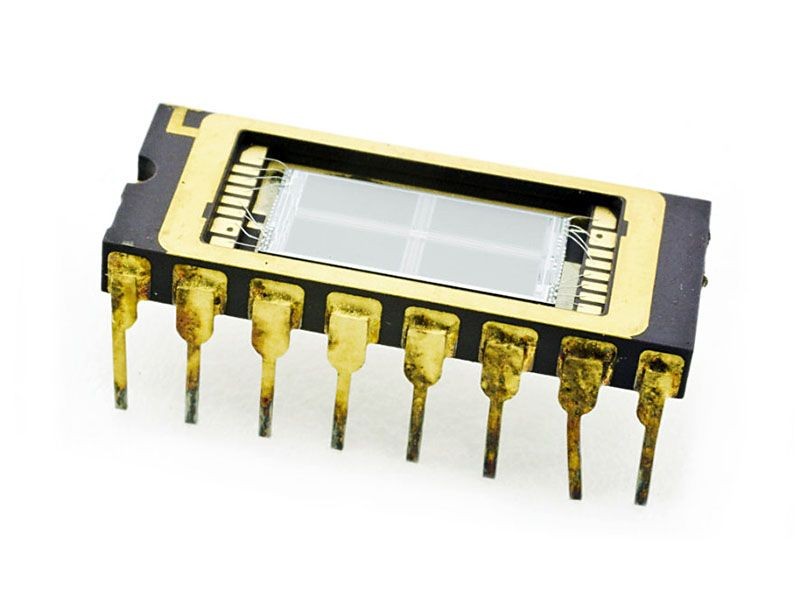
Hitachi 256K-bit DRAM
Japanese manufactured dynamic random-access memory (DRAM)
The Japanese Trade Ministry sees a chance to make Japan a leader in the dynamic random-access memory (DRAM) chip industry, as sales soared when DRAMs entered commercial production in the early 1970s. With customer demand in the millions, DRAMs became the first “mass market” chips, sparking fierce international competition. In 1976, the Japanese Trade Ministry funded Fujitsu, Hitachi, Mitsubishi, NEC, and Toshiba to develop 64K DRAMs. The consortium triumphed, decimating American memory suppliers and provoking the U.S. government to threaten trade sanctions. Although tensions eased between Japanese and American manufacturers, Korea soon overtook them both.
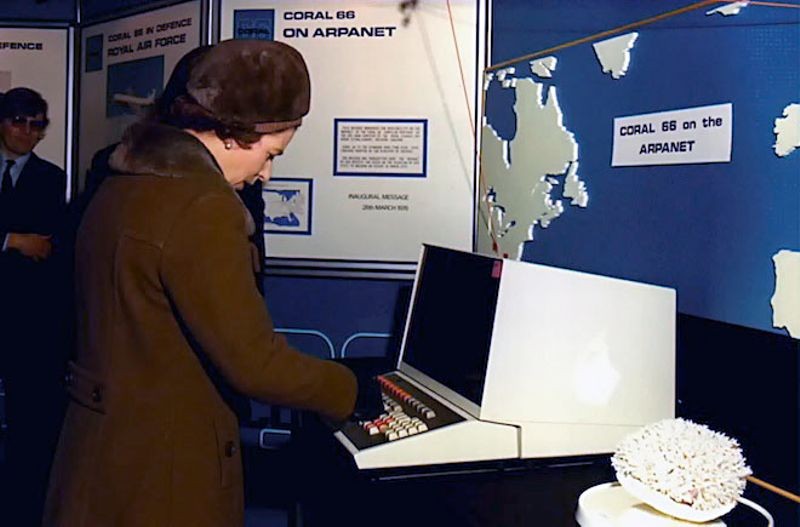
Elizabeth II, Queen of the United Kingdom
Queen’s First Email
Queen Elizabeth II of the United Kingdom sends out an e-mail on March 26 from the Royal Signals and Radar Establishment (RSRE) in Malvern as a part of a demonstration of networking technology.
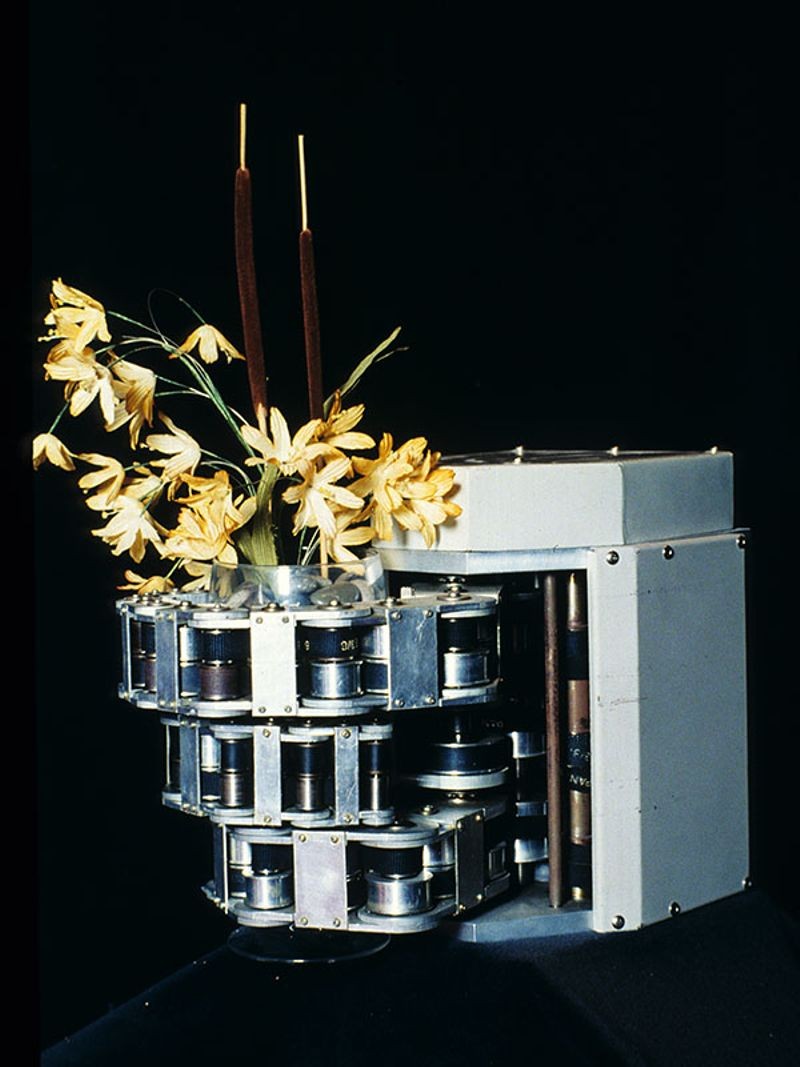
Soft Gripper robot
Shigeo Hirose´s Soft Gripper
Shigeo Hirose´s Soft Gripper robot can conform to the shape of a grasped object, such as a wine glass filled with flowers. The design Hirose created at the Tokyo Institute of Technology grew from his studies of flexible structures in nature, such as elephant trunks and snake spinal cords.

Apple-I
Steve Wozniak completes the Apple-1
Designed by Sunnyvale, California native Steve Wozniak, and marketed by his friend Steve Jobs, the Apple-1 is a single-board computer for hobbyists. With an order for 50 assembled systems from Mountain View, California computer store The Byte Shop in hand, the pair started a new company, naming it Apple Computer, Inc. In all, about 200 of the boards were sold before Apple announced the follow-on Apple II a year later as a ready-to-use computer for consumers, a model which sold in the millions for nearly two decades.
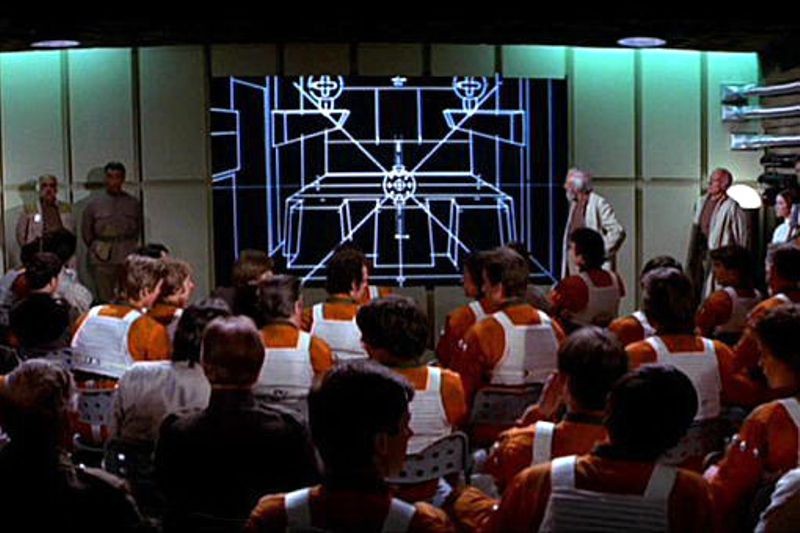
Death Star Briefing from Star Wars
Star Wars (Death Star Briefing)
Set in a Galaxy far, far away, Star Wars combined old-fashioned science fiction storytelling with cutting-edge special effects provided by Industrial Light & Magic. One effect, the Death Star briefing, featured a wire-frame version of the space station, one of the first uses of wire-frame animation in a major motion picture.
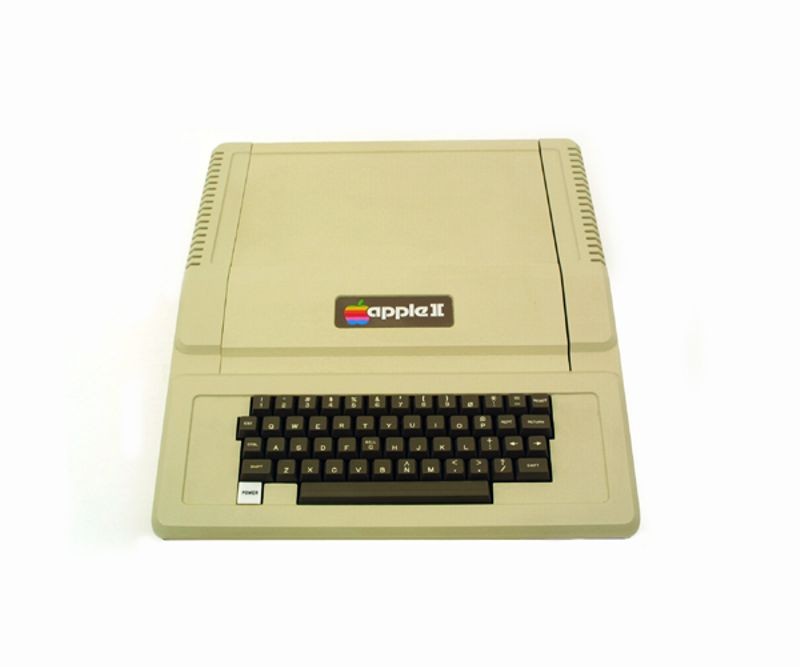
Apple II
Apple II introduced
Sold complete with a main logic board, switching power supply, keyboard, case, manual, game paddles, and cassette tape containing the game Breakout, the Apple-II finds popularity far beyond the hobbyist community which made up Apple’s user community until then. When connected to a color television set, the Apple II produced brilliant color graphics for the time. Millions of Apple IIs were sold between 1977 and 1993, making it one of the longest-lived lines of personal computers. Apple gave away thousands of Apple IIs to school, giving a new generation their first access to personal computers.
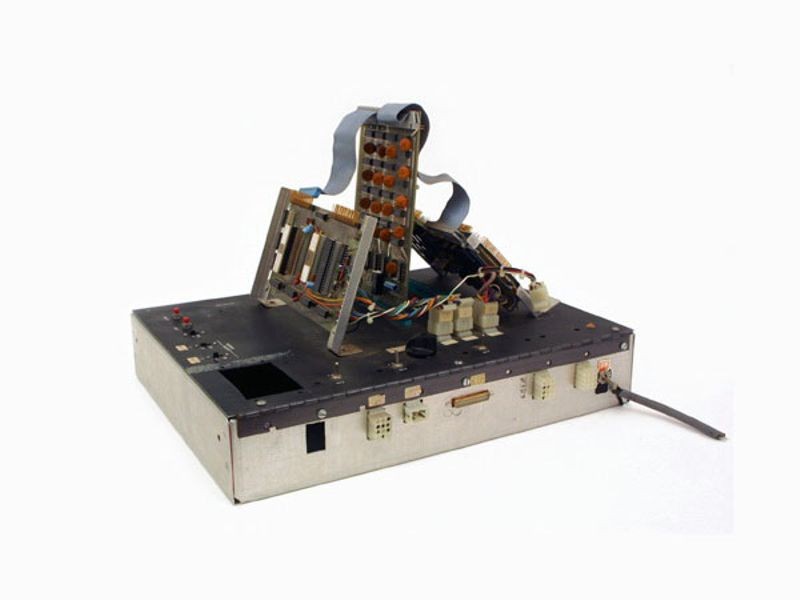
Atari VCS prototype
Atari launches the Video Computer System game console
Atari releases its Video Computer System (VCS) later renamed the Atari 2600. The VCS was the first widely successful video game system, selling more than twenty million units throughout the 1980s. The VCS used the 8-bit MOS 6507 microprocessor and was designed to be connected to a home television set. When the last of Atari’s 8-bit game consoles were made in 1990, more than 900 game titles had been released.
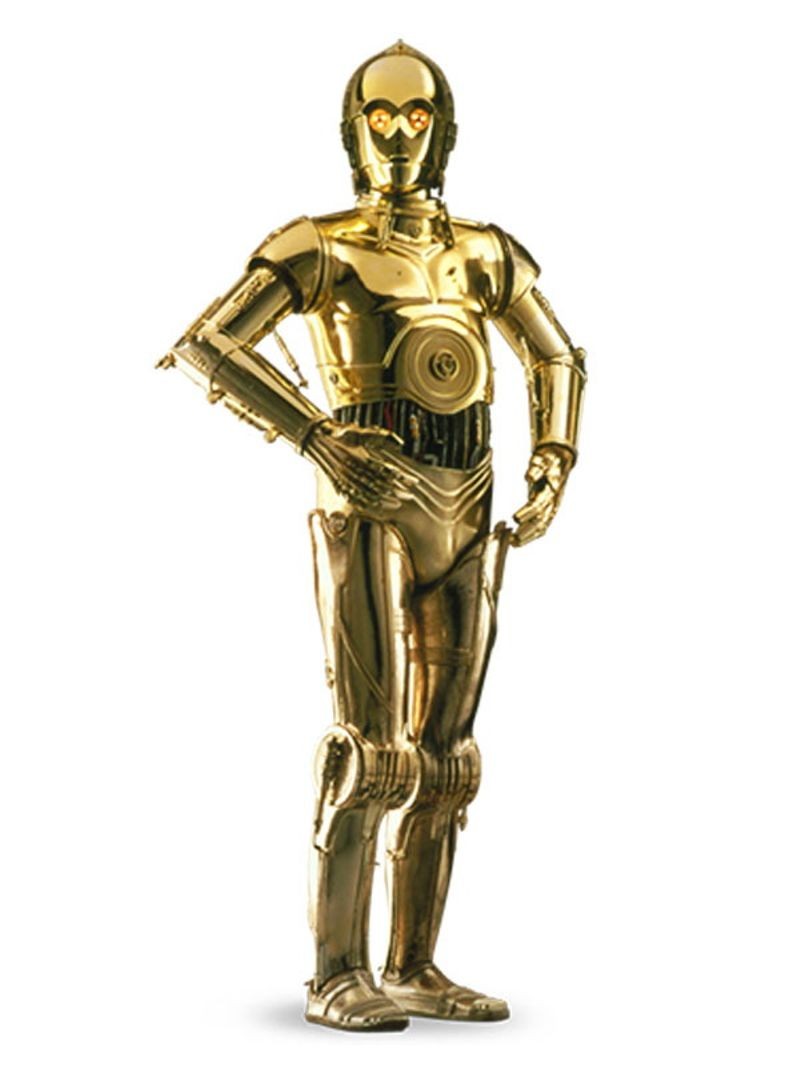
C3PO protocol droid
C3PO and R2D2 in Star Wars
C3PO and R2D2 play a critical role in 1977’s blockbuster hit movie Star Wars. Throughout the movie C3PO served as an ambassador-like robot that is knowledgeable of customs, traditions and over 6,000,000 languages. C3PO’s companion robot, R2D2, served as a mechanic, computer interface specialist and co-pilot for the film’s main protagonist Luke Skywalker.
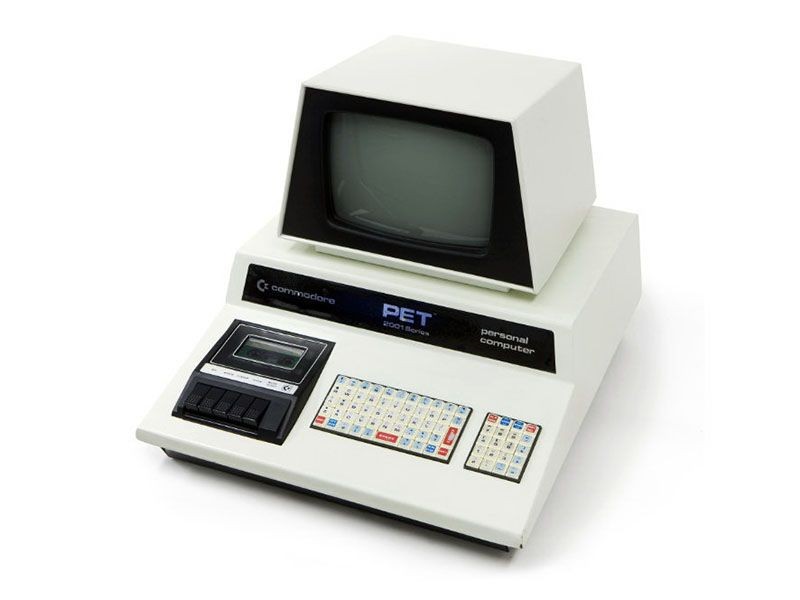
The Datasette is located on the lower left corner of the PET
Commodore 1530 Datasette
The built-in Commodore 1530 Datasette (data+cassette) is the primary storage device for the newly released Commodore PET. The device converted digital information from the computer into analog sound signals which were stored on compact cassettes. The method was cost-effective and reliable, but also very slow.
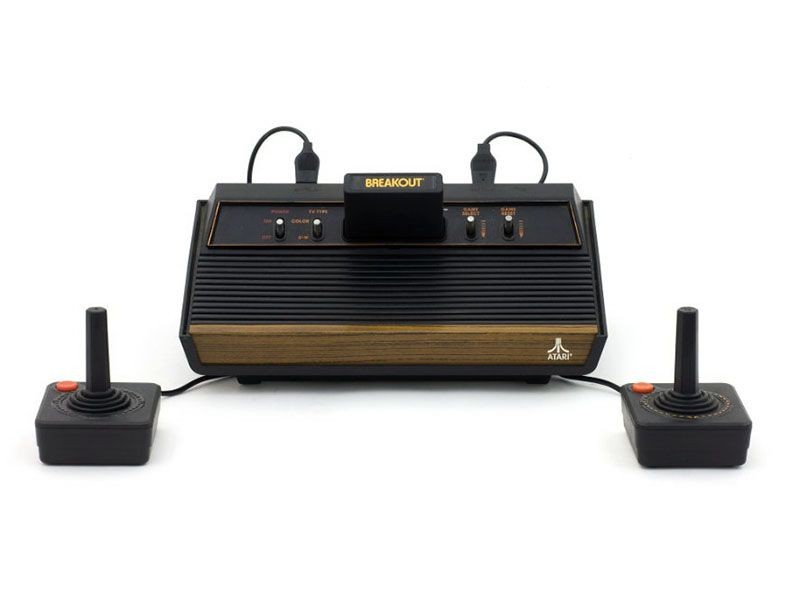
Atari 2600
ROM chips
The Atari Video Computer System (VCS) video game console is introduced. It was one of the first successful consoles that used interchangeable cartridges with factory programmed ROM chips to store the software. At first, designers planned to use an internal ROM chip that contained several pre-programmed games. This method was used in many predecessor consoles, but Atari’s choice on using cartridges in part led the VCS to becoming one of the most popular video gaming systems of all time.
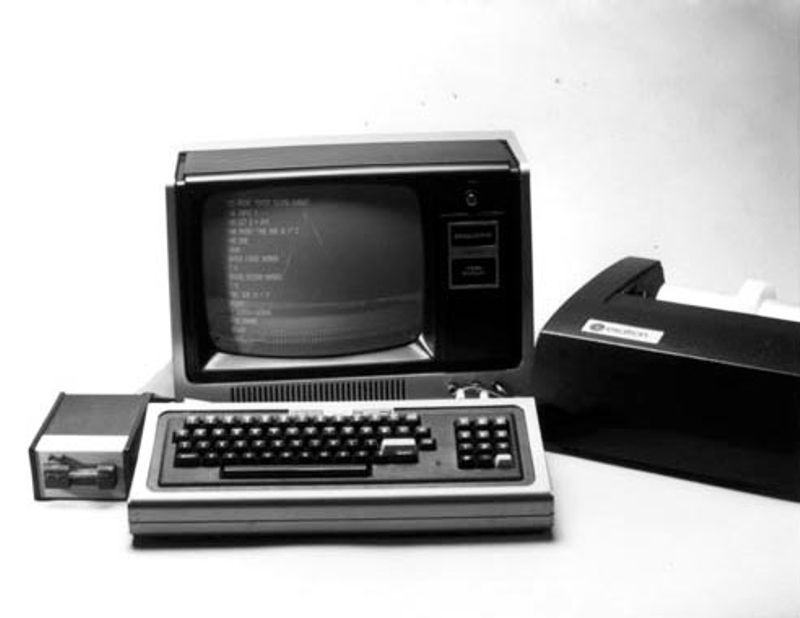
TRS-80
Tandy Radio Shack introduces its TRS-80
Performing far better than the company projections of 3,000 units for the first year, in the first month after its release Tandy Radio Shack´s first desktop computer — the TRS-80 — sells 10,000 units. The TRS-80 was priced at $599.95, included a Z80 microprocessor, video display, 4 KB of memory, a built-in BASIC programming language interpreter, cassette storage, and easy-to-understand manuals that assumed no prior knowledge on the part of the user. The TRS-80 proved popular with schools, as well as for home use. The TRS-80 line of computers later included color, portable, and handheld versions before being discontinued in the early 1990s.
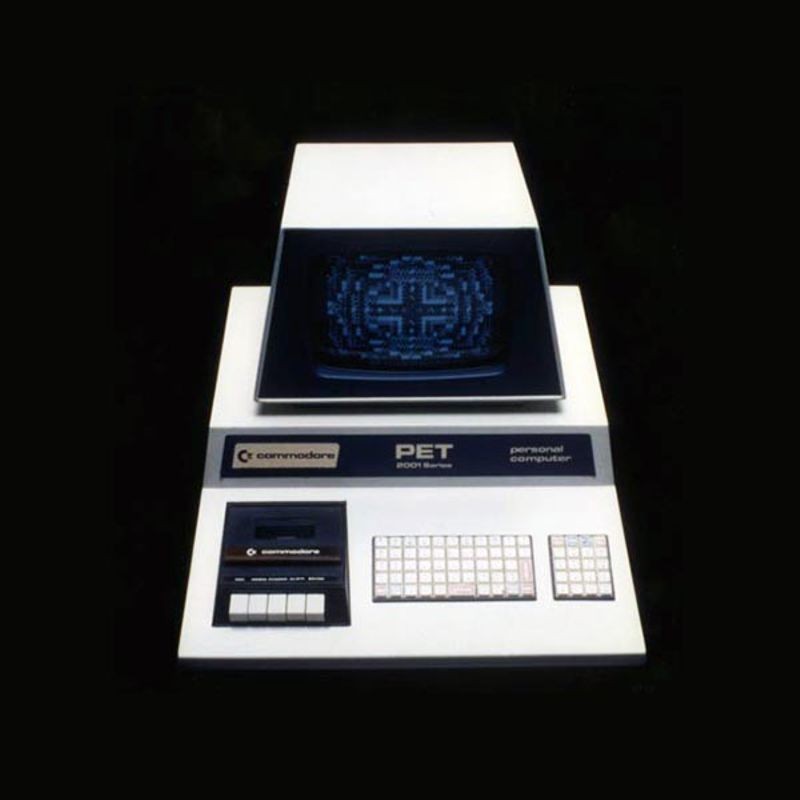
Commodore PET
The Commodore PET (Personal Electronic Transactor) introduced
The first of several personal computers released in 1977, the PET comes fully assembled with either 4 or 8 KB of memory, a built-in cassette tape drive, and a membrane keyboard. The PET was popular with schools and for use as a home computer. It used a MOS Technologies 6502 microprocessor running at 1 MHz. After the success of the PET, Commodore remained a major player in the personal computer market into the 1990s.
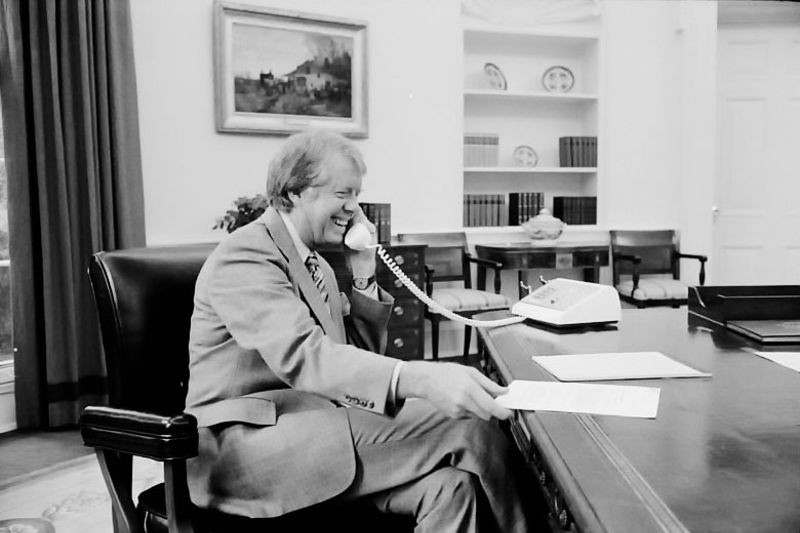
Jimmy Carter in the Oval Office
First computers installed in the White House
While the US government had funded many computing projects dating back to the 1940s, it wasn’t until the Carter administration that a computer is actually installed in the White House. Staffers were given terminals to access a shared Hewlett-Packard HP3000 computer, and the technology department acquired a Xerox Alto for the Oval Office. Later, an IBM laser printer was installed, though President Reagan had the Alto removed from the Oval Office when he was elected.
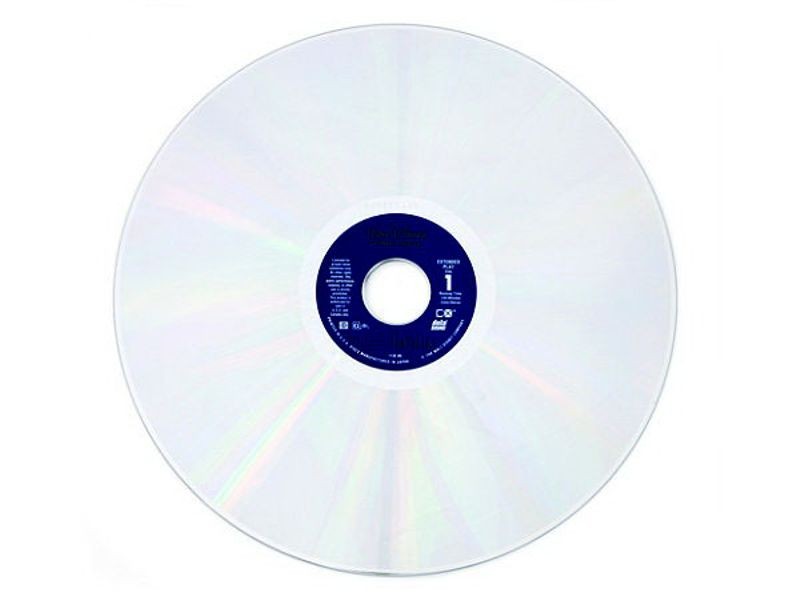
A LaserDisc for the Disney classic Fantasia
LaserDisc
The LaserDisc is introduced as “Discovision” by MCA and Philips. The first LaserDisc sold in North America was the film Jaws. It offered better audio and video quality than its competitors, but LaserDisc players were prohibitively expensive for many consumers. That fact, in conjunction with the availability of only a limited LaserDisc library, helped it gain significant popularity only in parts of Asia. Now obsolete, it was the direct forerunner of the CD and DVD.
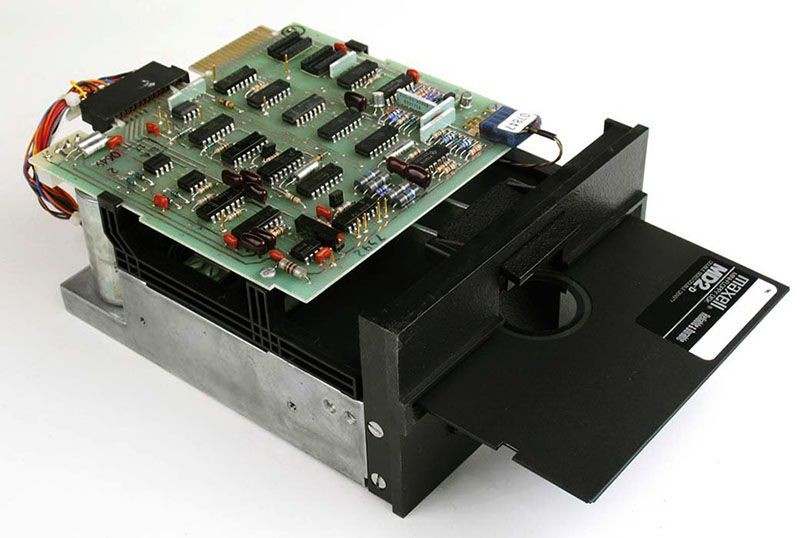
Original Shugart SA400 5 ¼-inch floppy disk drive
Shugart 5 ¼-inch flexible disk drive
The 5 ¼-inch flexible disk drive and diskette are introduced by Shugart Associates in 1976. This was the result of a request by Wang Laboratories to produce a disk drive small enough to use with a desktop computer, since 8-inch floppy drives were considered too large for that purpose. By 1978, more than 10 manufacturers were producing 5 ¼-inch floppy drives.
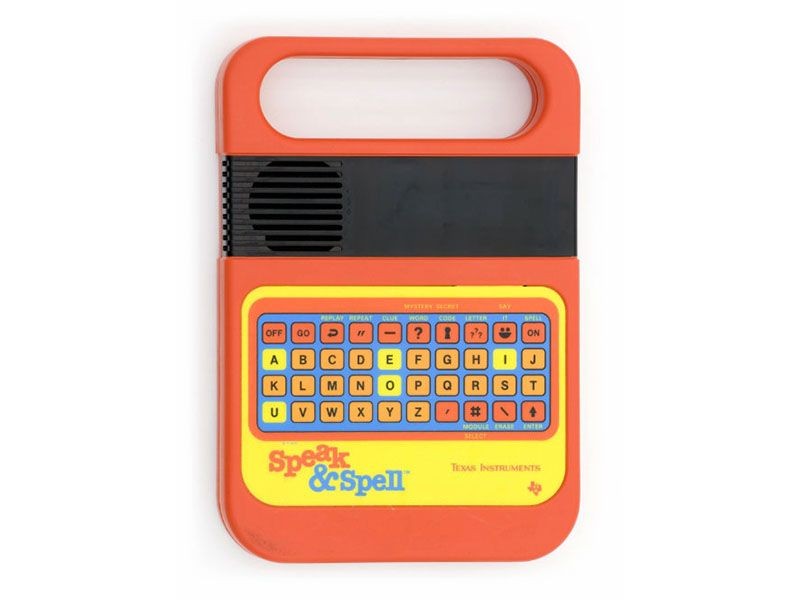
TI’s Speak & Spell
Speak & Spell
Texas Instruments Inc. introduces Speak & Spell, a talking learning aid for children aged 7 and up. Its debut marked the first electronic duplication of the human vocal tract on a single integrated circuit. Speak & Spell used linear predictive coding to formulate a mathematical model of the human vocal tract and predict a speech sample based on previous input. It transformed digital information processed through a filter into synthetic speech and could store more than 100 seconds of linguistic sounds.
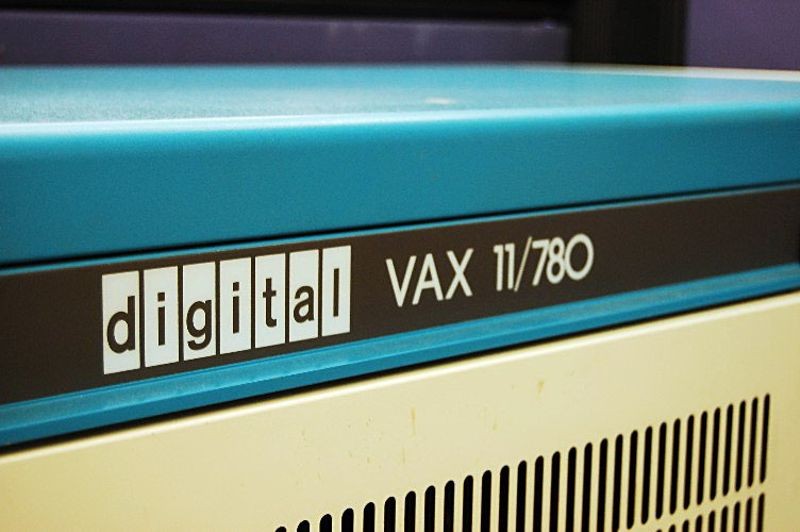
DEC VAX 11/780
The DEC VAX introduced
Beginning with the VAX-11/780, the Digital Equipment Corporation (DEC) VAX family of computers rivals much more expensive mainframe computers in performance and features the ability to address over 4 GB of virtual memory, hundreds of times the capacity of most minicomputers. Called a “complex instruction set computer,” VAX systems were backward compatible and so preserved the investment owners of previous DEC computers had in software. The success of the VAX family of computers transformed DEC into the second-largest computer company in the world, as VAX systems became the de facto standard computing system for industry, the sciences, engineering, and research.
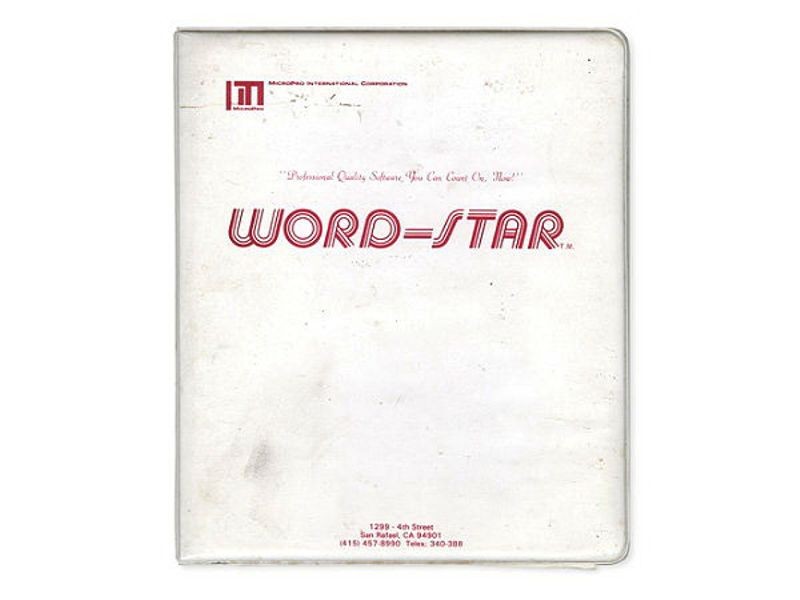
WordStar documentation binder
WordStar is created
Rob Barnaby creates WordStar while at MicroPro International. Among the first popular word processing systems for personal computers, WordStar originally ran on the CP/M operating system, and later on DOS and Windows. In 1981, it had significant market share, in part because it came bundled with the Osborne 1 computer. WordStar retained a loyal following well after Microsoft Word surpassed it in sales.
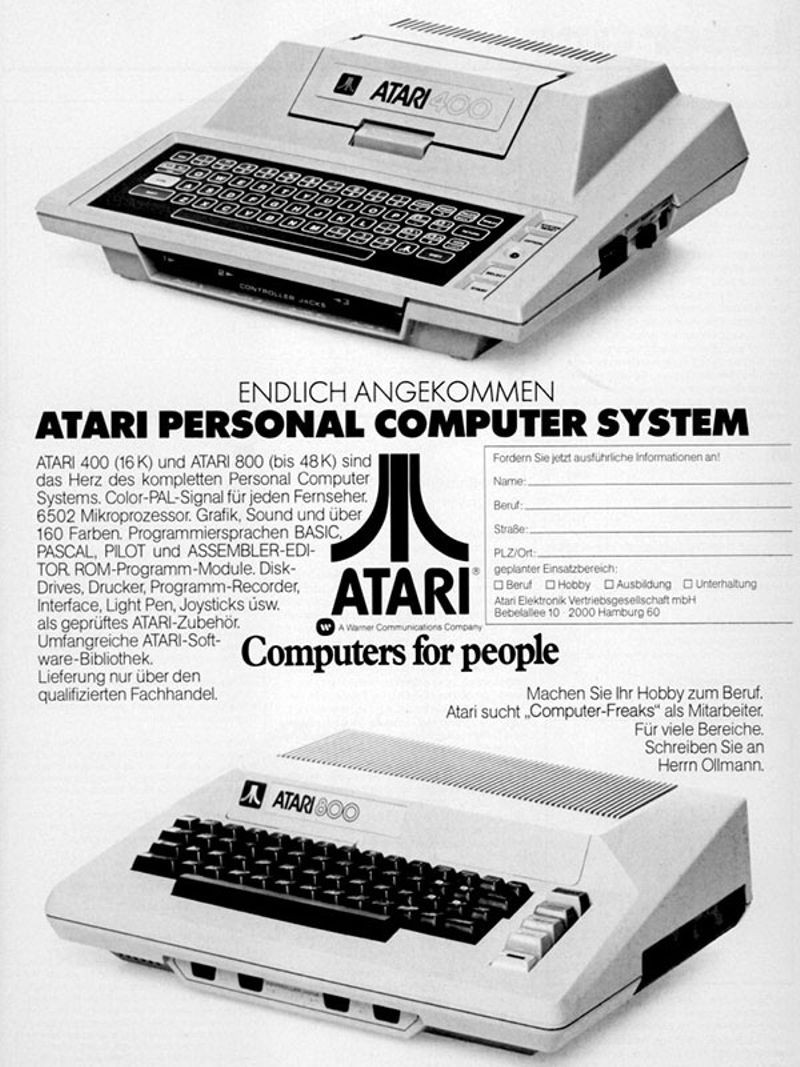
Early Atari 400/800 advertisement
Atari introduces its Model 400 and 800 computers
Shortly after delivery of the Atari VCS game console, Atari designs two microcomputers with game capabilities: the Model 400 and Model 800. The 400 served primarily as a game console, while the 800 was more of a home computer. Both faced strong competition from the Apple II, Commodore PET, and TRS-80 computers. Atari’s 8-bit computers were influential in the arts, especially in the emerging DemoScene culture of the 1980s and ’90s.

Intel 4 Mbit bubble memory array
Bubble memory
Intel introduces its 4 Mbit bubble memory array. A few magnetic bubble memories reached the market in the 1970s and 1980s and were used in niche markets like video games and machine tool controllers. The introduction of cheaper, faster and higher density memory solutions rendered bubble memory obsolete. Each silver square, or “bubble,” on this board stored 1 Mbit.

Apple II personal computer, 1977
Computing for One: Personal computers vs. Networks
Until the late 1970s the momentum in computing has been all about togetherness – users first sharing computers, then linking over networks and soon networks of networks. But the rise of the personal computer from the mid 1970s makes something once unthinkable an everyday reality: a standalone computer for just one person. While the new machines can be connected to networks and to each other, a lot of users both at home and work don’t bother. They run their own programs off of floppy disks. The “personal computer revolution” begins to push back against the centralized control of network system administrators, a trend that won’t fully reverse until the 2000s and the emergence of “the cloud.”
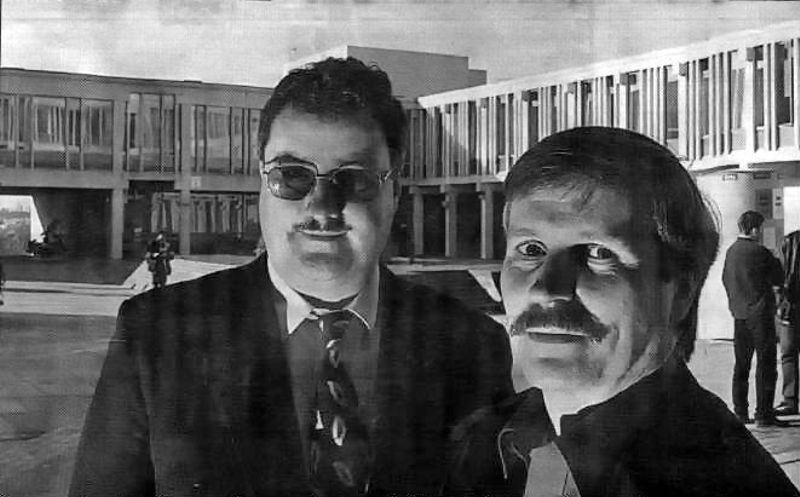
Richard Bartle and Roy Trubshaw circa 1999
MUDs
The first Multi-User Domain (or Dungeon), MUD1, goes on-line. Richard Bartle and Roy Trubshaw, two students at the University of Essex, write a program that allows many people to play against each other on-line. MUDs become popular with college students as a means of adventure gaming and for socializing. By 1984, there will be more than 100 active MUDs and variants around the world.
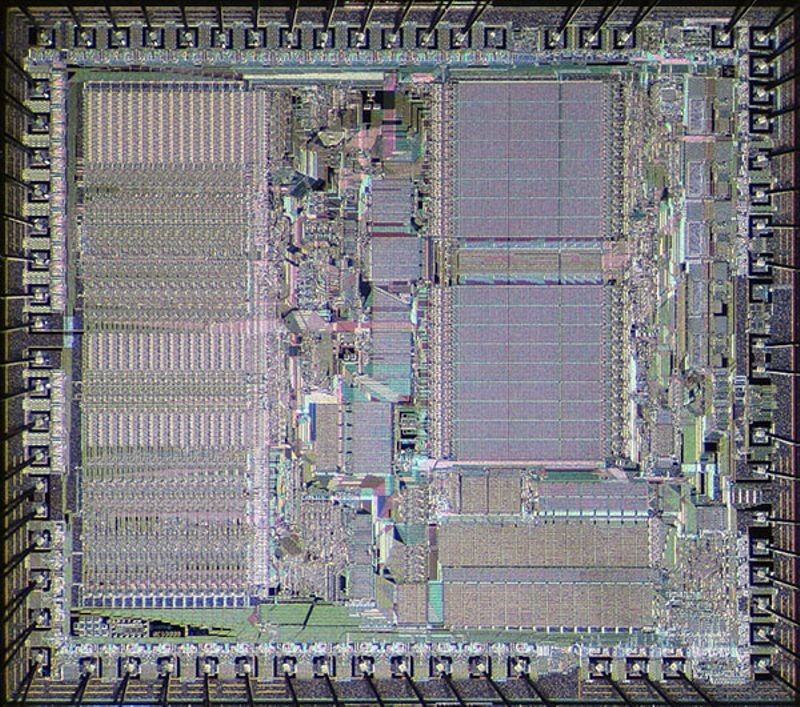
Die shot of Motorola 68000
Image by Pauli Rautakorpi
Motorola introduces the 68000 microprocessor
The Motorola 68000 microprocessor exhibited a processing speed far greater than its contemporaries. This high performance processor found its place in powerful work stations intended for graphics-intensive programs common in engineering.

CompuServe screen
North America: Rise of Online Services and BBSs
Personal computers have started to slowly take off in North America by the end of the 1970s, a decade earlier than most other parts of the world. Connecting them to remote servers can be a nightmare of endless settings and false starts, accompanied by the squawks and squeals of an expensive, finicky modem. Most computer owners don’t bother, but by 1979 a subset of brave or stubborn ones are subscribing to early online services like MicroNet (later CompuServe Information Service) and The Source, or connecting to Bulletin Board Services (BBSs) hosted on somebody else’s minicomputer or PC. By 1990 more than two million North Americans will be online for discussion groups, shopping, news, chat, e-mail, and more; the early online services have been joined by AOL, Prodigy, and others. This dial-up world pioneers much of what we do on the Web, though in a more communal setting.
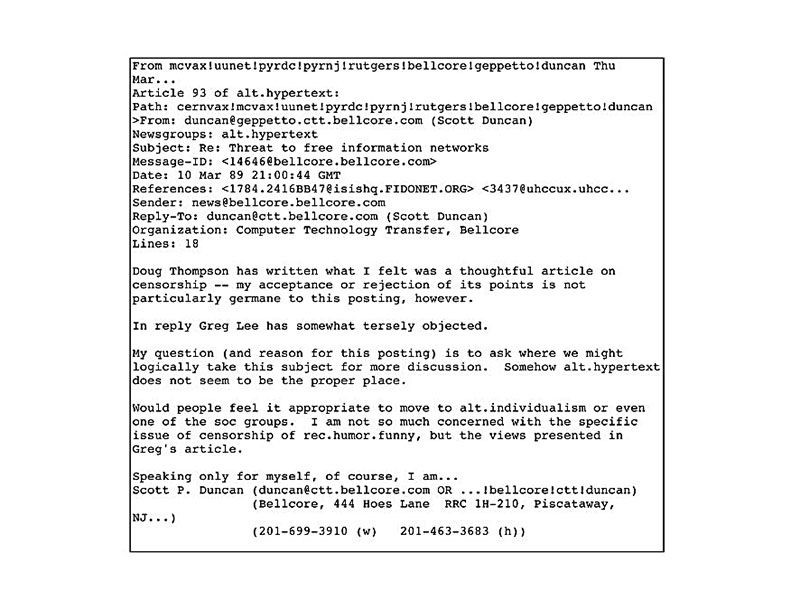
Usenet
Rise of Professional and Geek Networks
From the late 1970s on academics and geeks continue expanding “techie” online communities like Usenet (a message board conceived by Duke University students) and BITNET (a network for file and email exchange). One of the most durable online communities, Usenet provides topic-oriented “newsgroups” for collaborative discussion, and its community and ethos will shape the early Web.
As networked computers arrive in offices through the 1970s and 1980s, professional information systems continue to blossom. LEXIS (which has roots in the computer utilities of the 1960s) provides access to legal cases. NEXIS adds a massive searchable database of news articles. There are a number of industrial purchasing systems based on “Electronic Data Interchange” standards for computerized transactions. DIALOG provides pricey information for businesses, and dozens of more specialized services address particular niches.

Texas Instruments TI 99/4 microcomputer
Texas Instruments TI 99/4 is released
Based around the Texas Instruments TMS 9900 microprocessor running at 3 MHz, the TI 99/4 has one of the fastest CPUs available in a home computer. The TI99/4 had a wide variety of expansion boards, with an especially popular speech synthesis system that could also be used with TI’s Speak & Spell educational game. The TI 99/4 sold well and led to a series of TI follow-on machines.
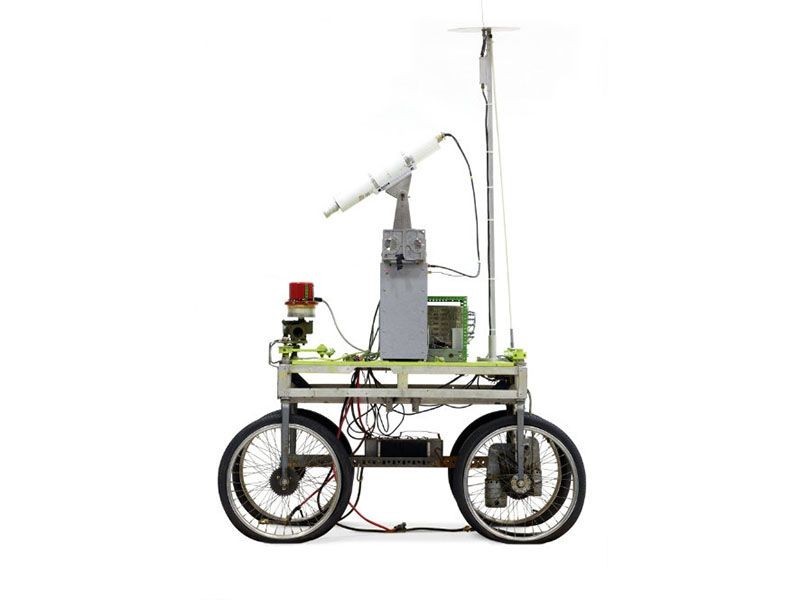
The Stanford Cart
The Stanford Cart
The Stanford Cart was a long-term research project undertaken at Stanford University between 1960 and 1980. In 1979, it successfully crossed a room on its own while navigating around a chair placed as an obstacle. Hans Moravec rebuilt the Stanford Cart in 1977, equipping it with stereo vision. A television camera, mounted on a rail on the top of the cart, took pictures from several different angles and relayed them to a computer.
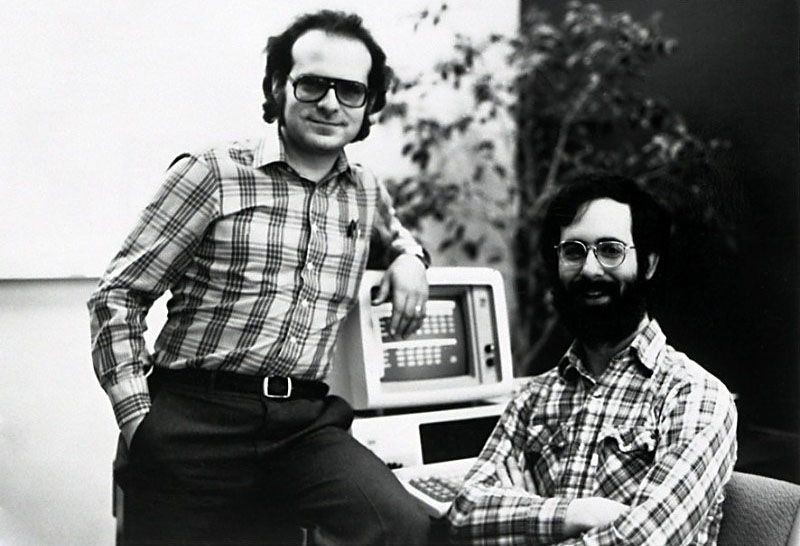
Bob Frankston (L) and Dan Bricklin (R)
Visicalc is developed
Harvard MBA candidate Dan Bricklin and programmer Bob Frankston develop VisiCalc, the program that turned the personal computer into a business machine. Initially developed for the Apple II, whose sales it boosted, VisiCalc automated the recalculation of spreadsheets, allowing users to ask “What if?” questions of their financial information.
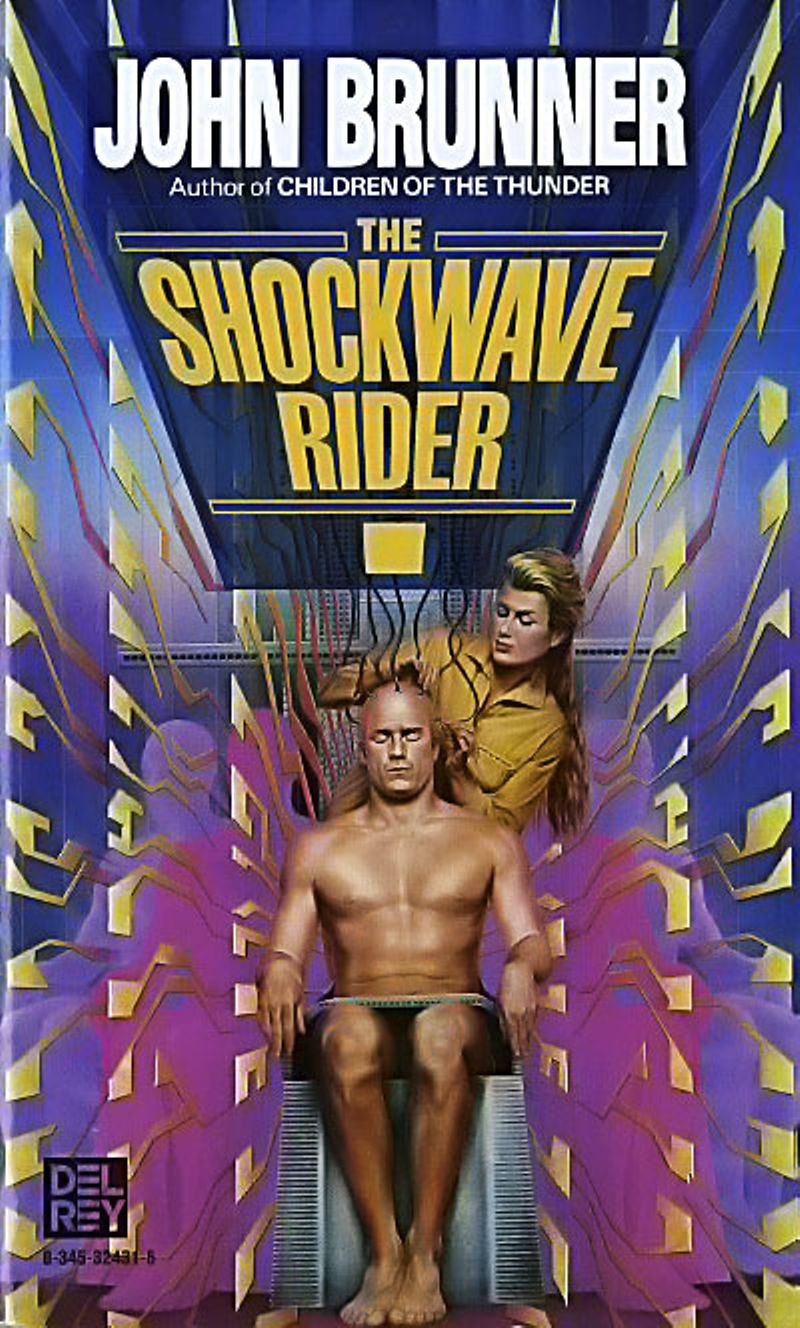
The Shockwave Rider book cover
Worms
John Shoch and Jon Hupp at the Xerox Palo Alto Research Center create the computer “worm,” a short program that searches a network for idle processors. Initially designed to provide more efficient use of computers and for testing, the worm has the unintended effect of invading networked computers, creating a security threat. Shoch took the term “worm” from the 1976 book The Shockwave Rider, by John Brunner, in which an omnipotent “tapeworm” program runs loose through a network of computers.

